Venice in Two Days – Find Out The Best (including Burano)
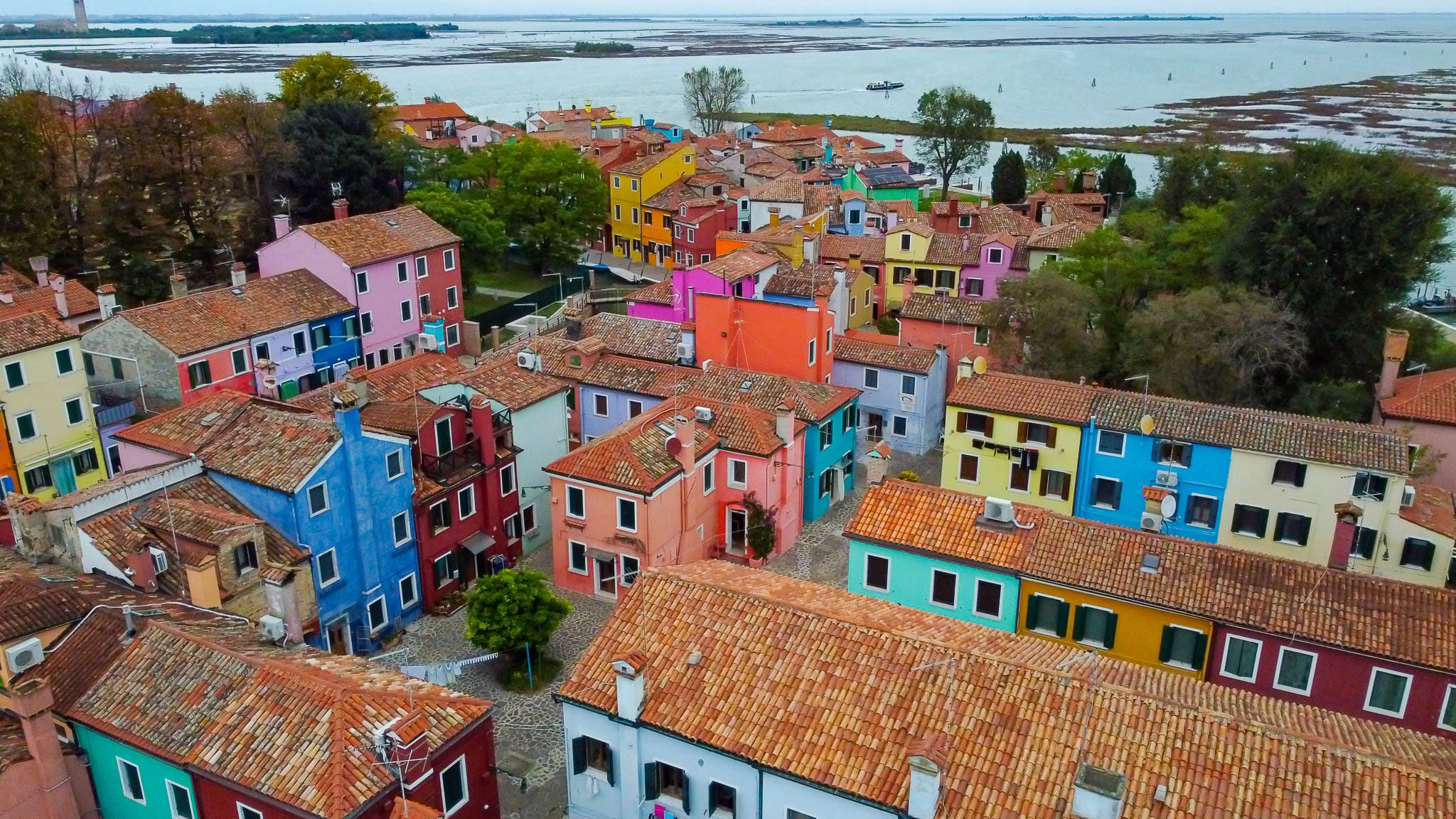
Two Days in Venice: A Timeless Journey Through History and Colour
Venice, the floating city built on more than 100 islands in a lagoon of the Adriatic Sea, is one of the most unique and historically rich destinations in the world. Once the heart of the powerful Venetian Republic, it dominated trade between Europe and the East for centuries, amassing immense wealth and influence. With its labyrinthine alleys, romantic canals, and architectural masterpieces, Venice feels like a living museum suspended in time. Despite the crowds and rising waters, its charm remains irresistible — so much so that I’ve been lucky to visit it twice, a decade apart, and was equally fascinated both times.
Both visits included a trip to Burano, a colourful island that stole my heart — the first time by chance, after a spontaneous recommendation from a stranger, and the second time because I knew I couldn’t skip one of the most beautiful places in Italy.
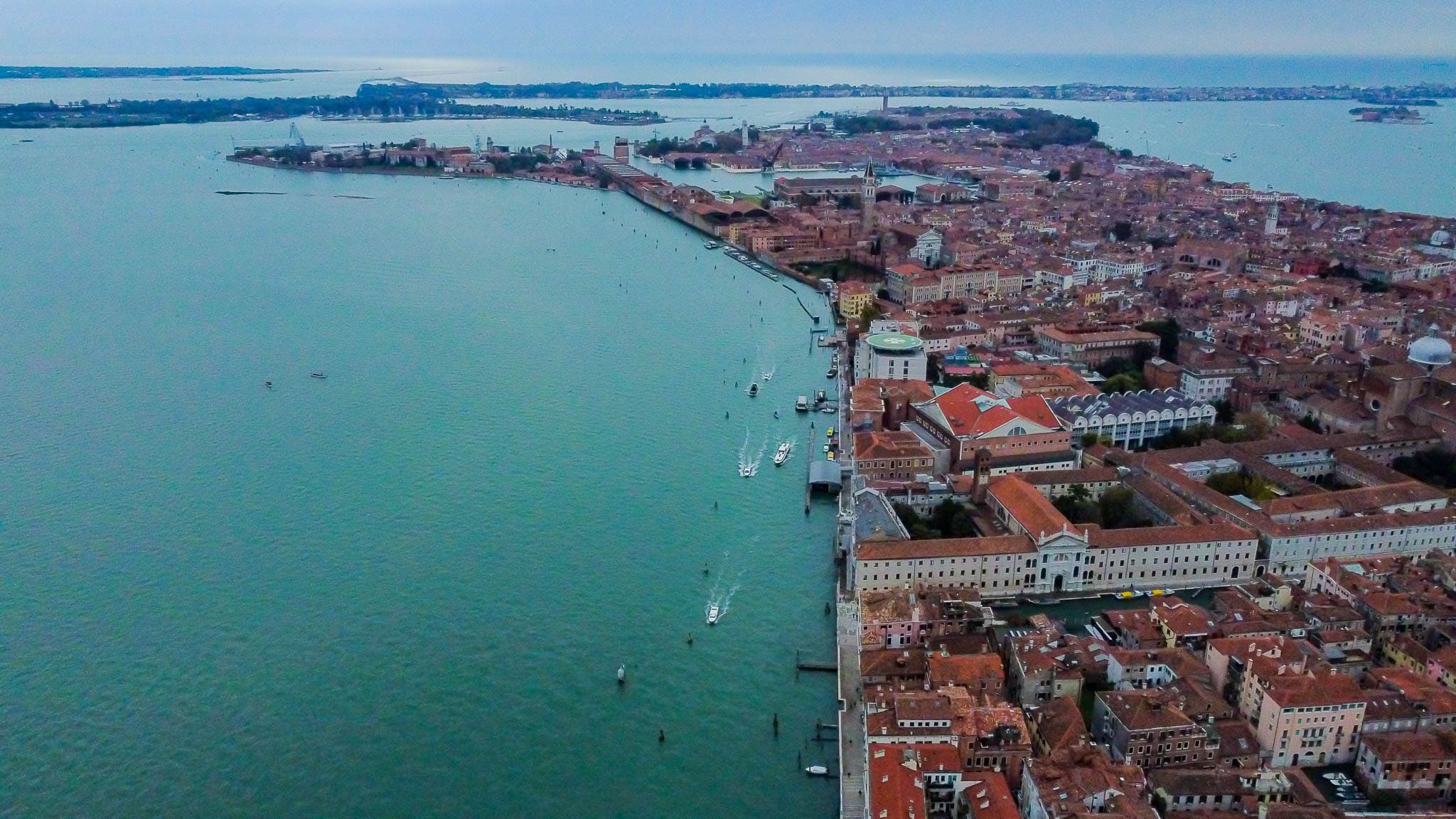
Day 1: Exploring the Historic Heart of Venice
Bridge of Sighs
We begin the day at the iconic Ponte dei Sospiri, or Bridge of Sighs.
Walking time from Venice Santa Lucia station: ~25 minutes
This enclosed white limestone bridge connects the Doge’s Palace with the New Prison across the canal. It was named by Lord Byron, who wrote that prisoners would let out a final sigh as they glimpsed their last view of Venice through the small stone windows before being led to their cells — often for life.
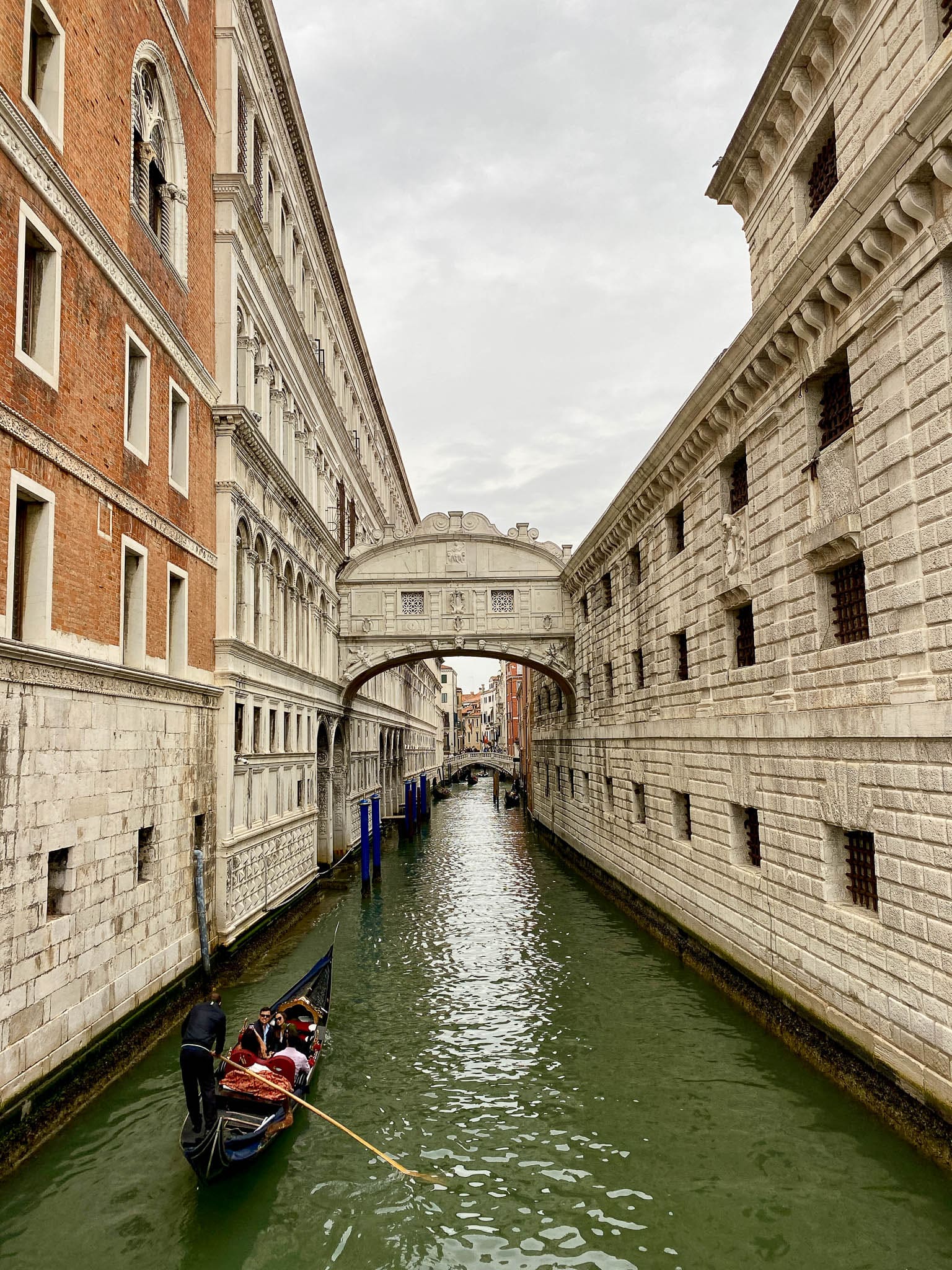
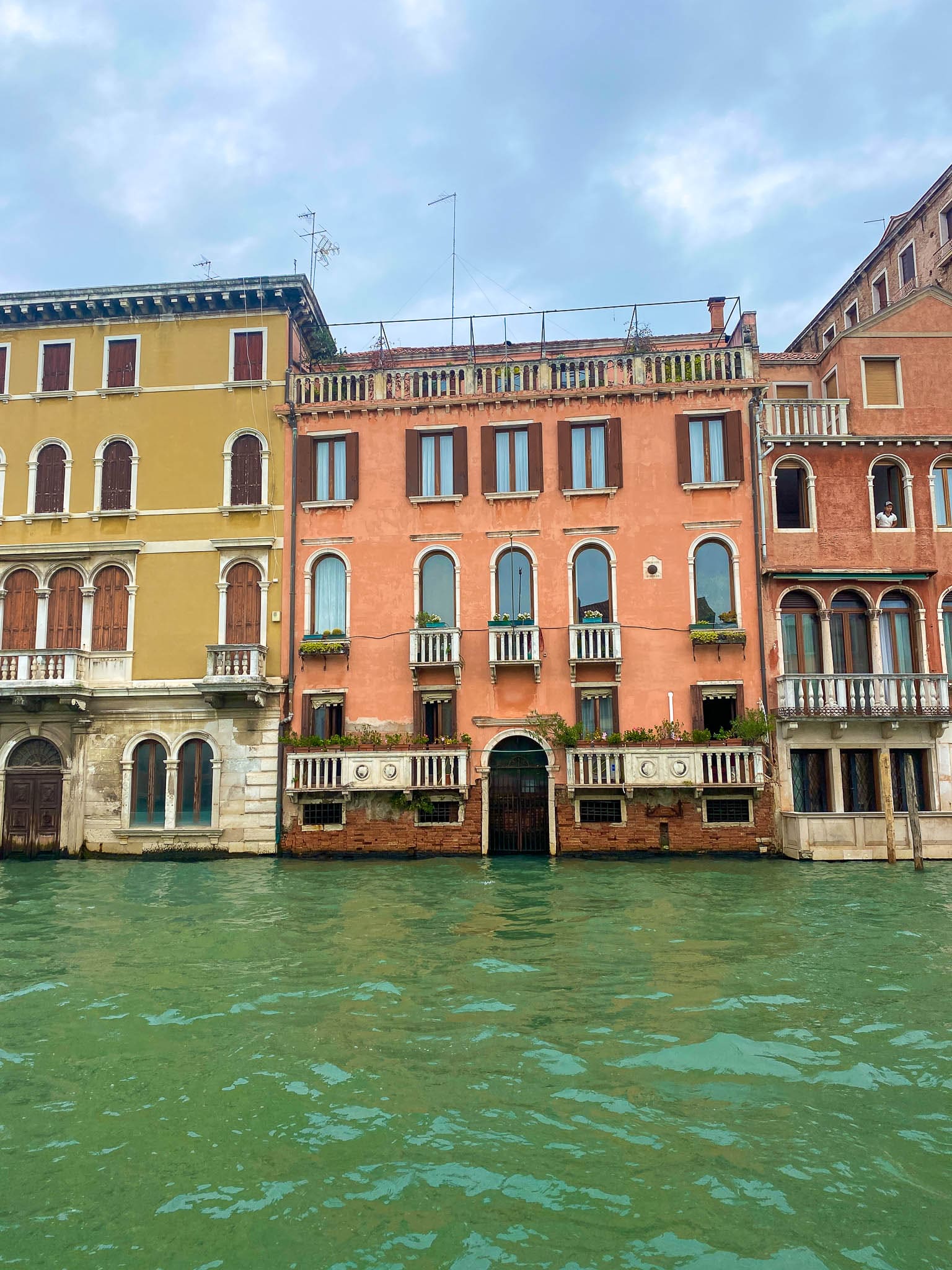
Doge’s Palace (Palazzo Ducale)
Right beside the Bridge of Sighs
This Gothic masterpiece was once the residence of the Doge (the chief magistrate of Venice) and the seat of government. Inside, you’ll find magnificent halls, Tintoretto’s paintings, and access to the prison — yes, the same one connected by the Bridge of Sighs.
Entrance: From €15.
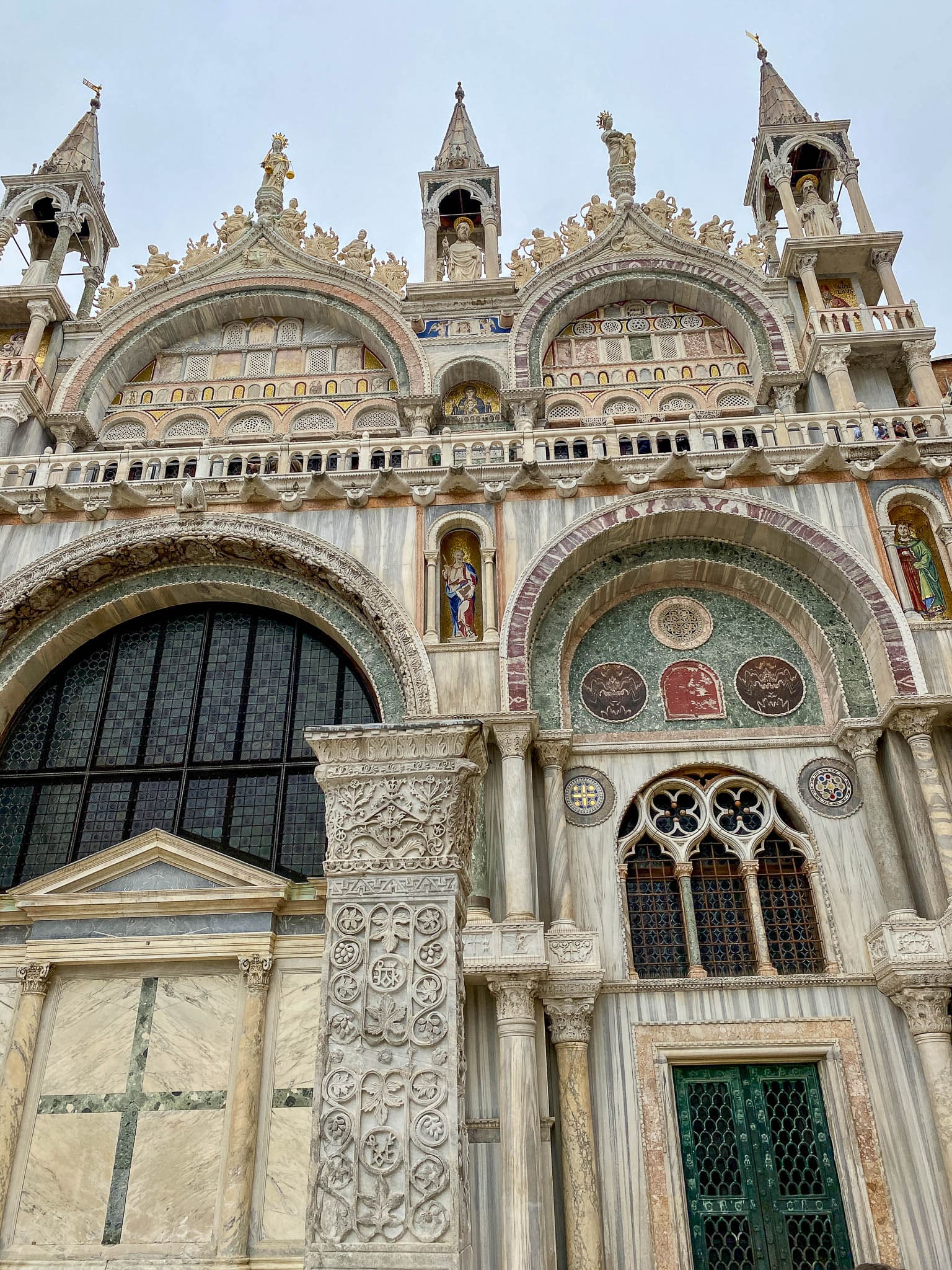
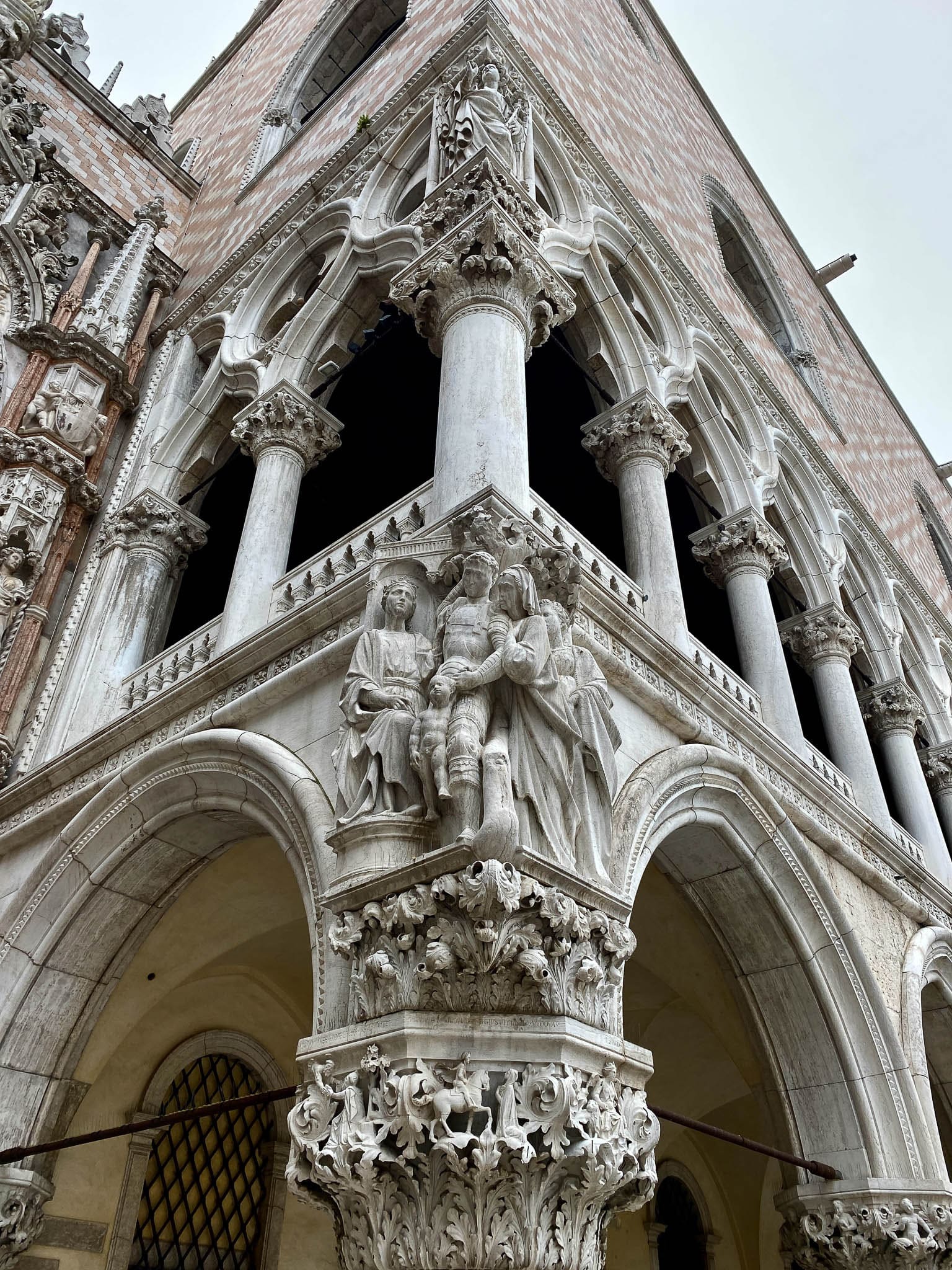
Carta Gate & St. Mark’s Basilica
1-minute walk
After passing the Carta Gate, you’ll enter the majestic Piazza San Marco, home to the stunning Basilica di San Marco.
Entrance fee: €3 for the basic visit.
This church is a Byzantine jewel, adorned with more than 8,000 square meters of golden mosaics, many crafted by hand. Its opulence reflects Venice’s era as a maritime empire.
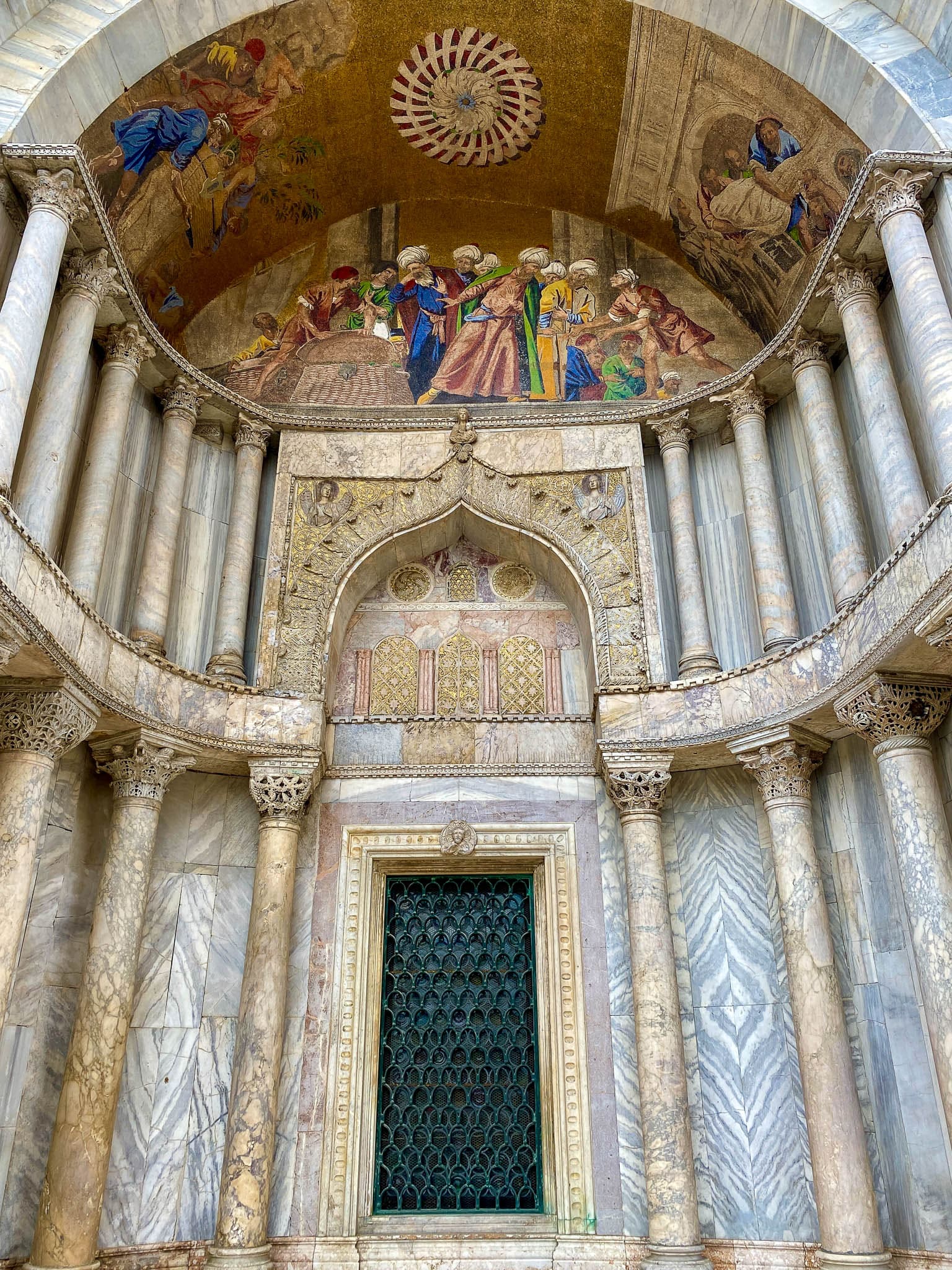
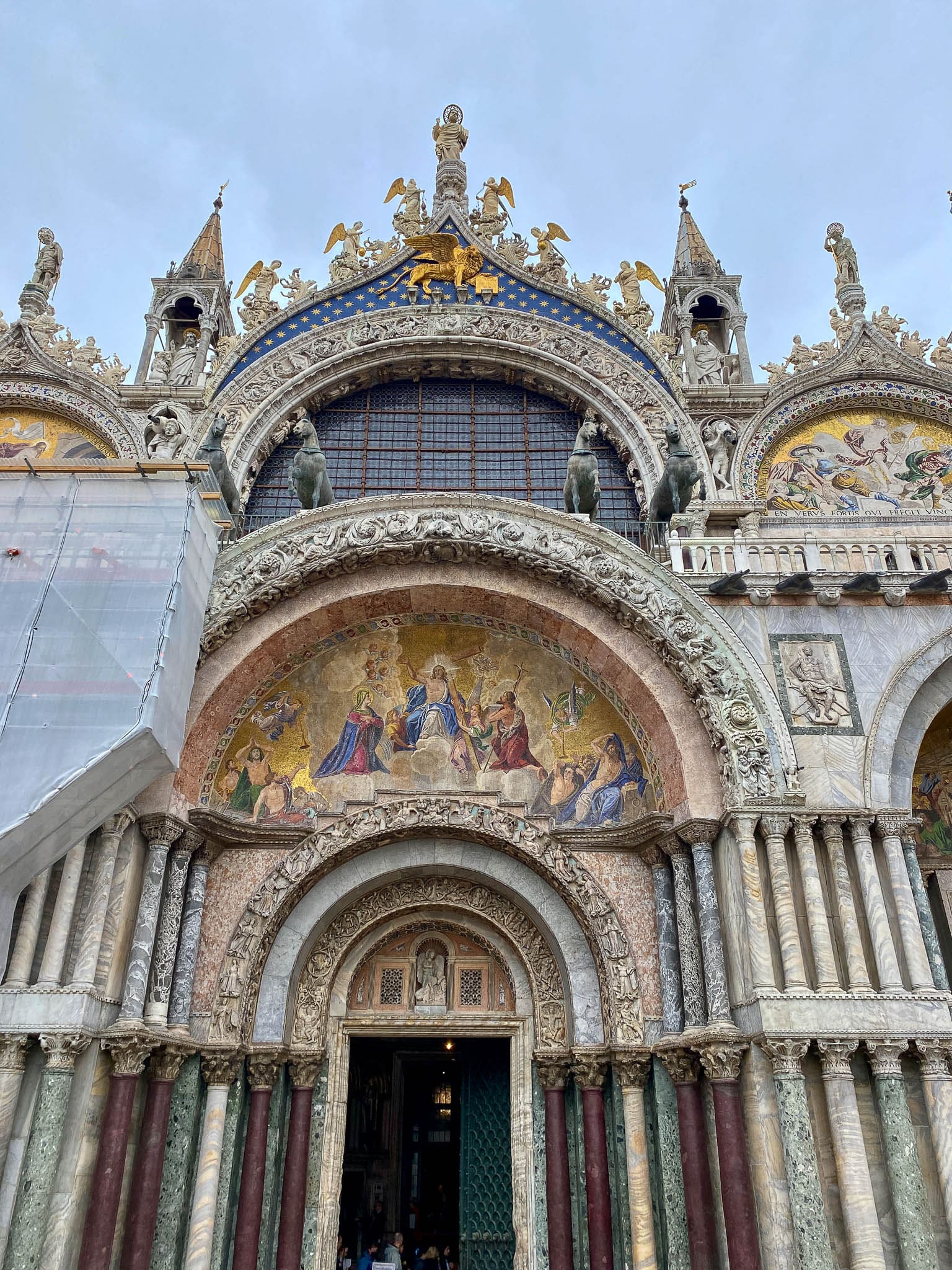
St. Mark’s Campanile & Caffè Florian
Still in Piazza San Marco
The Campanile di San Marco is the tallest structure in Venice and offers panoramic views of the city from the top (€10 to climb). In the square, you’ll also find luxury cafes and boutiques — but beware, sitting down at a café may cost you more than just a coffee.
Tip: Always ask if there’s a seating charge.
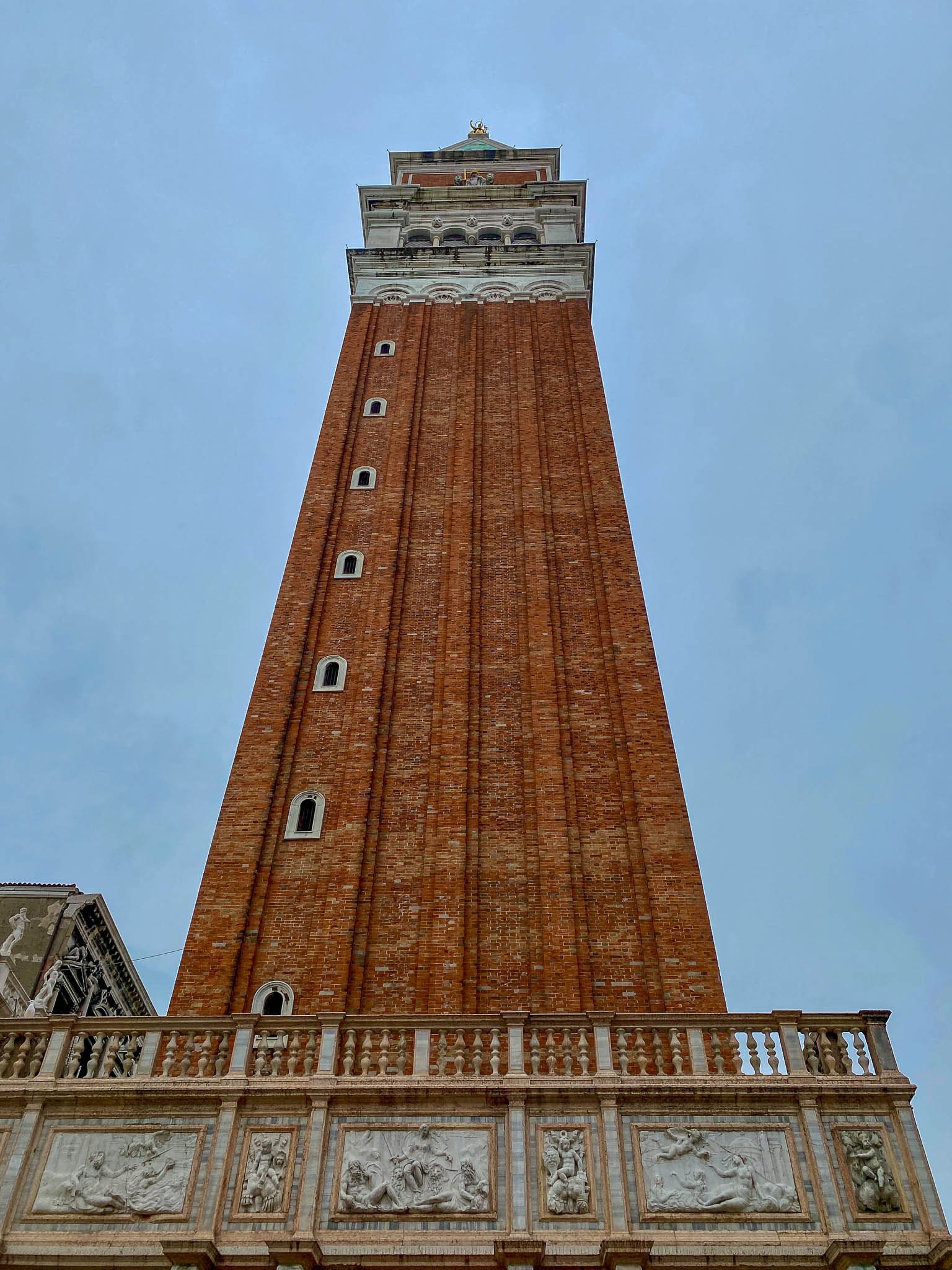
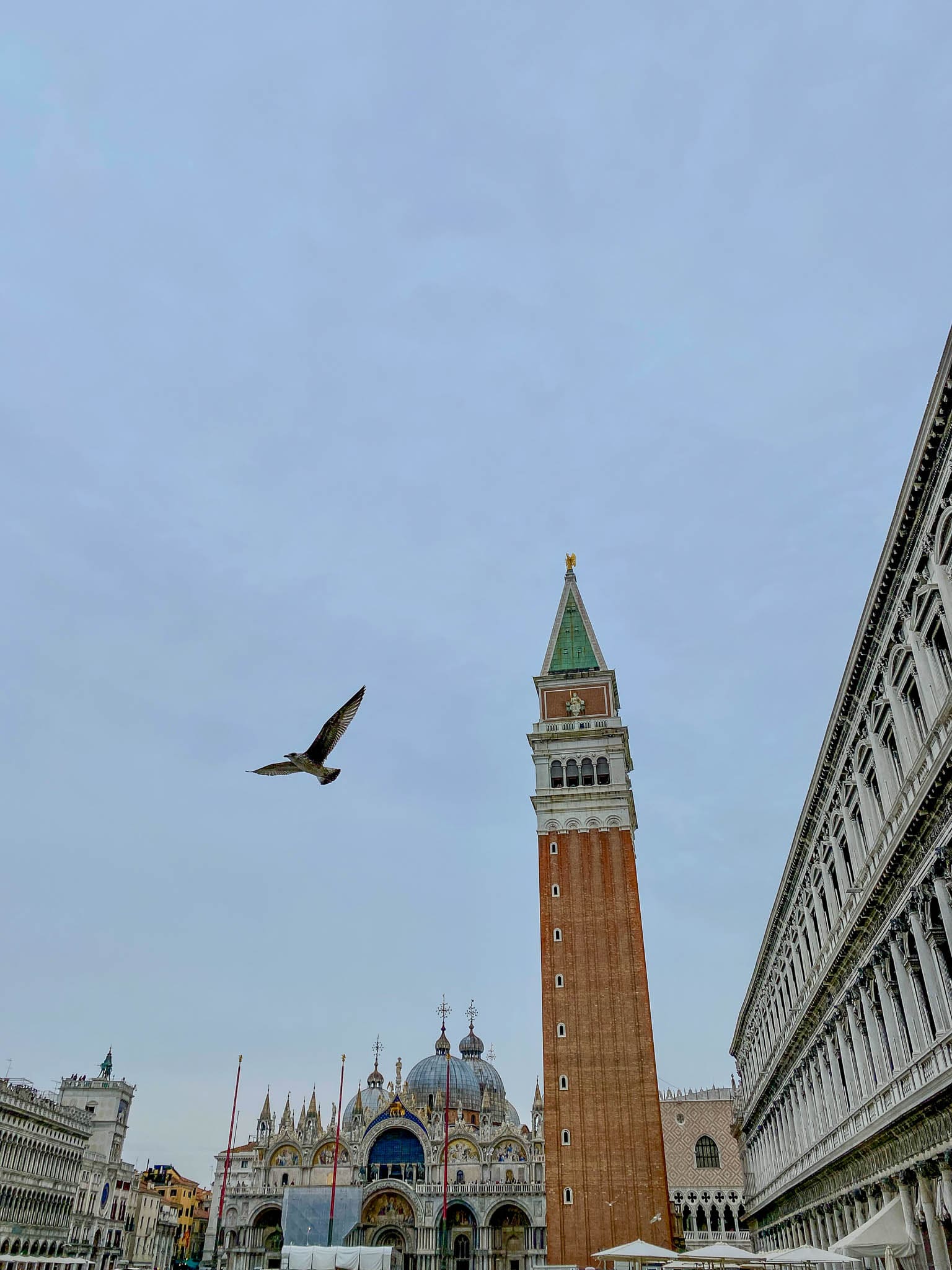
One of the most famous cafés is Caffè Florian, opened in 1720. It’s said to be the oldest café in Italy and a favorite spot of Casanova. We admired it from the outside — the vintage decor and romantic vibe are worth a peek even if you don’t go in.
Try some cicchetti, Venetian tapas served on bread. They cost around €2–2.50 each. If they charge more, walk away — there are better options elsewhere!
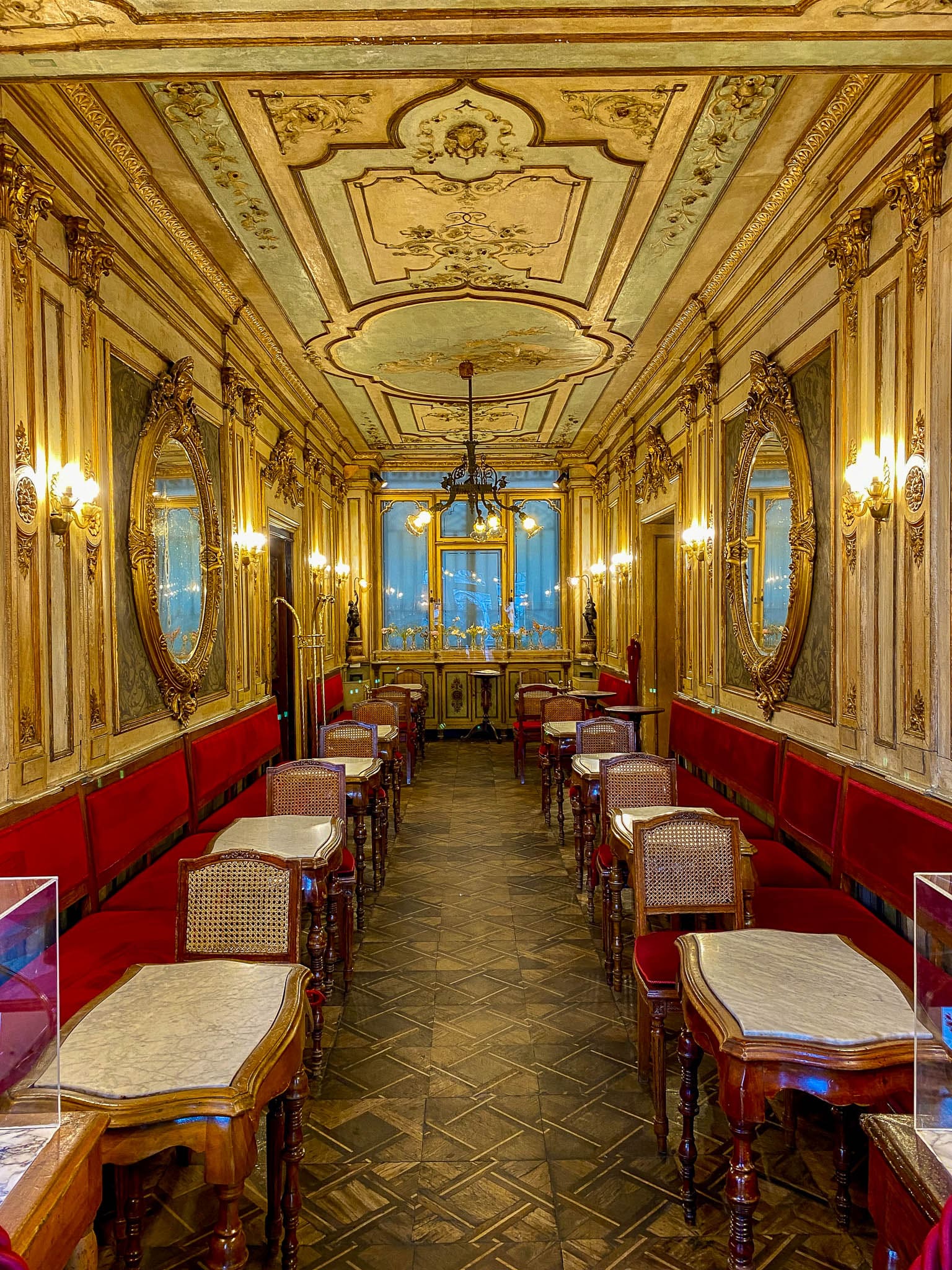
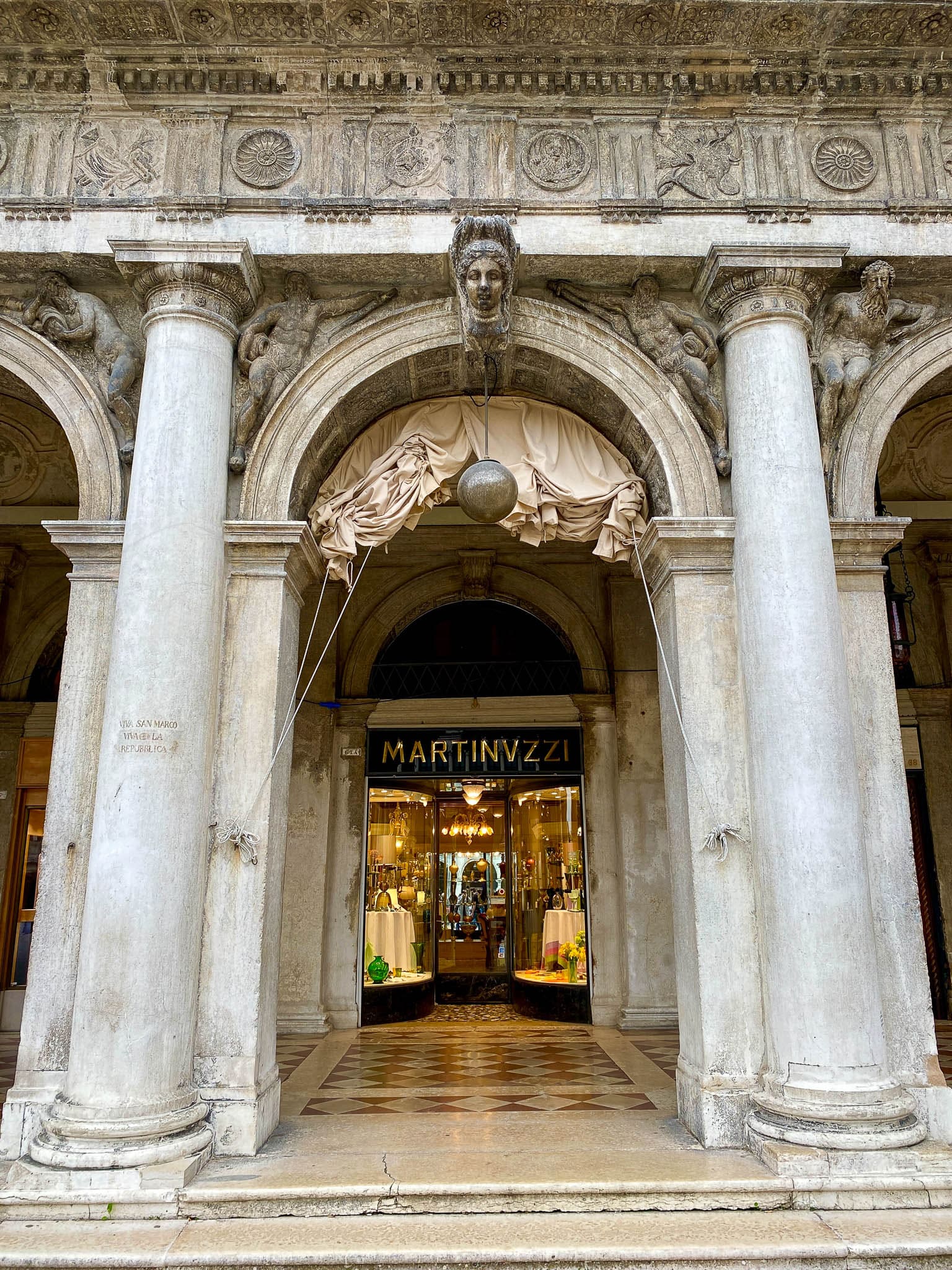
Torre dell’Orologio
Located at the entrance to Piazza San Marco
This Renaissance clock tower, built in the late 15th century, displays both the time and zodiac signs. Two bronze figures, known as the “Moors”, strike the bell at the top every hour.
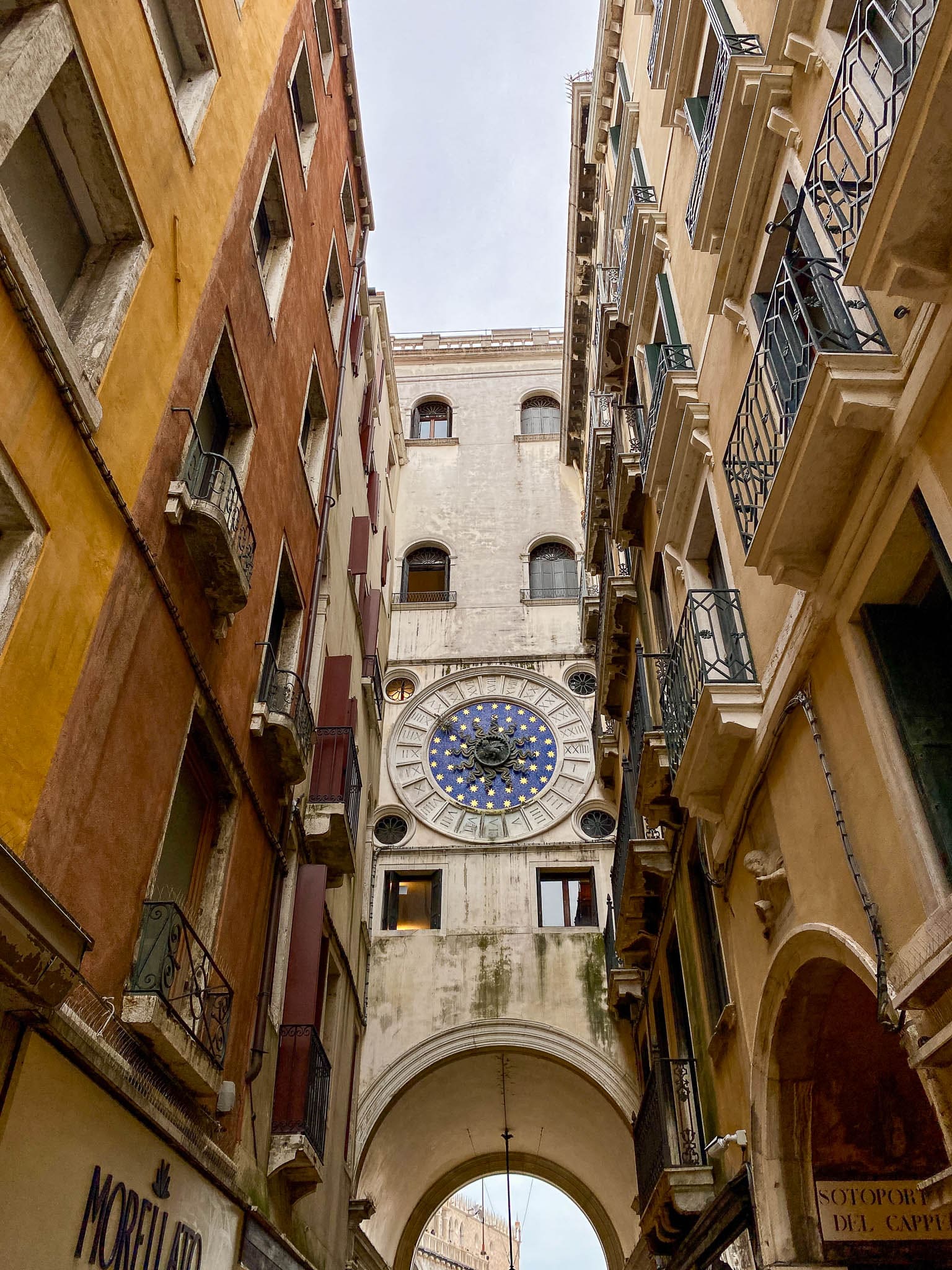
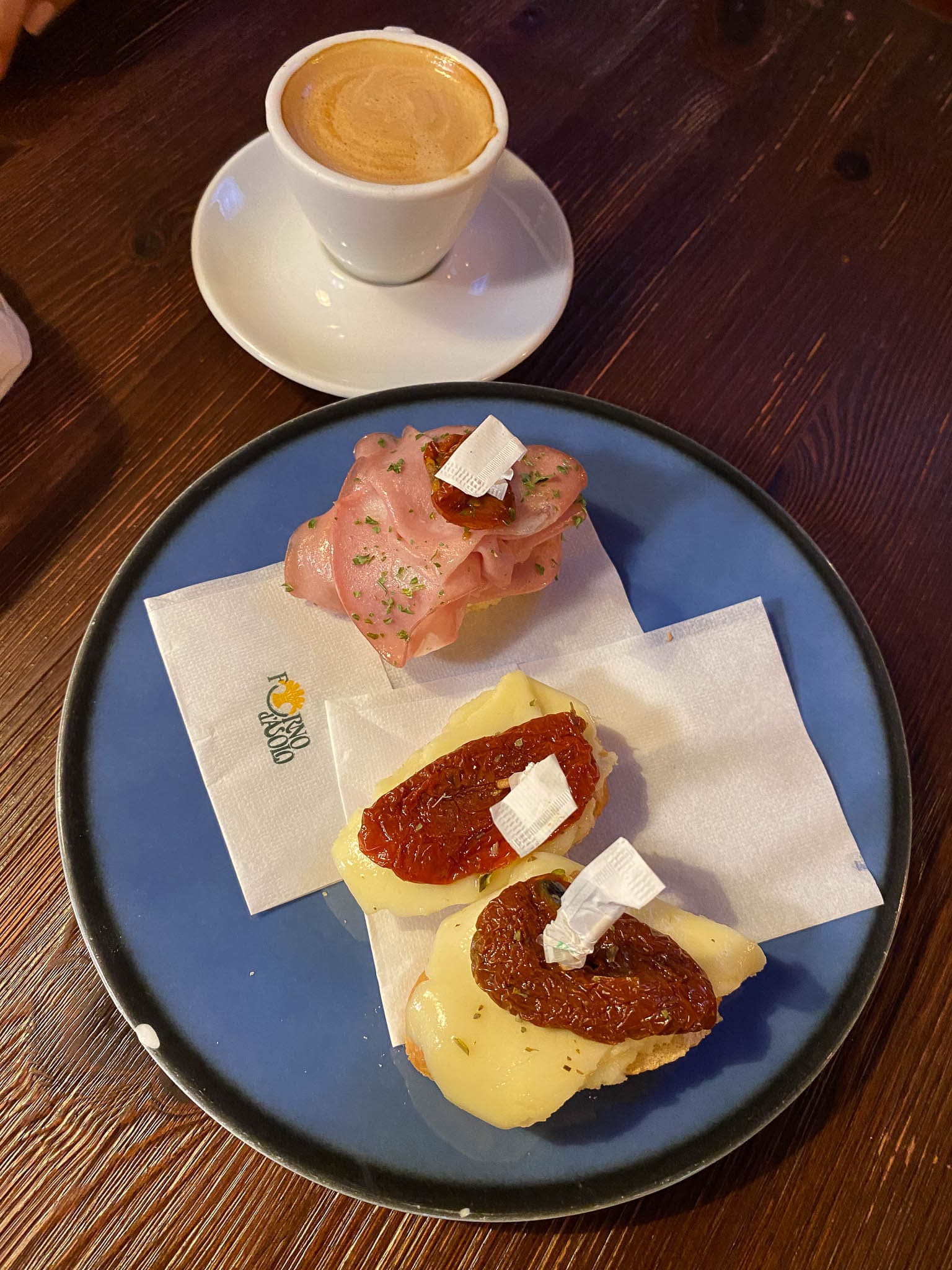
Rialto Bridge & San Giacomo di Rialto
Walk: ~10 minutes
Next, head to the Rialto Bridge, the oldest of the four bridges crossing the Grand Canal. Completed in 1591, it was once the economic center of Venice, packed with merchants and market stalls. The design was controversial at the time, but it’s now one of the city’s most recognized landmarks.
Just across the bridge is the Church of San Giacomo di Rialto, believed to be the oldest church in Venice, founded in the 5th century.
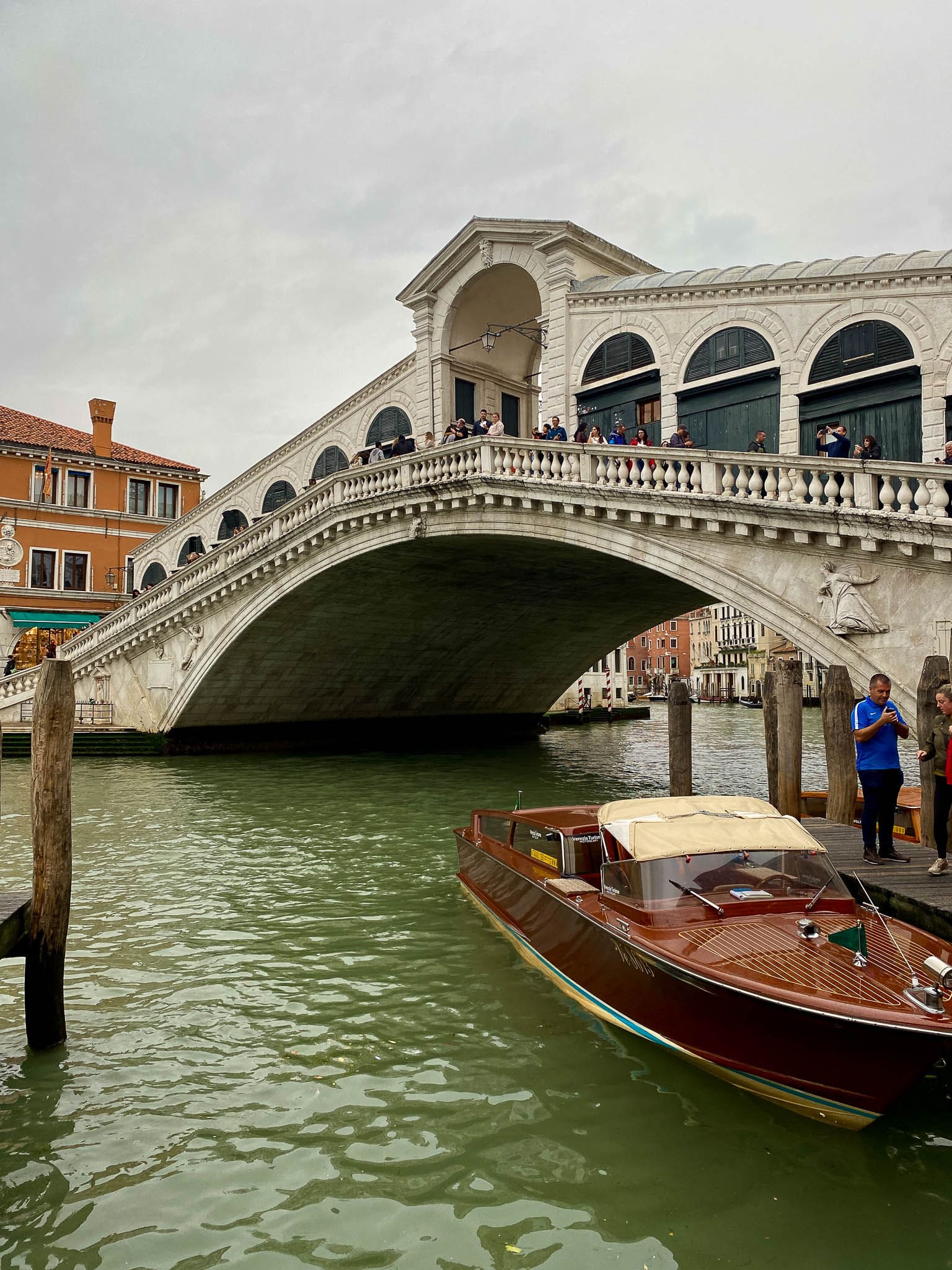
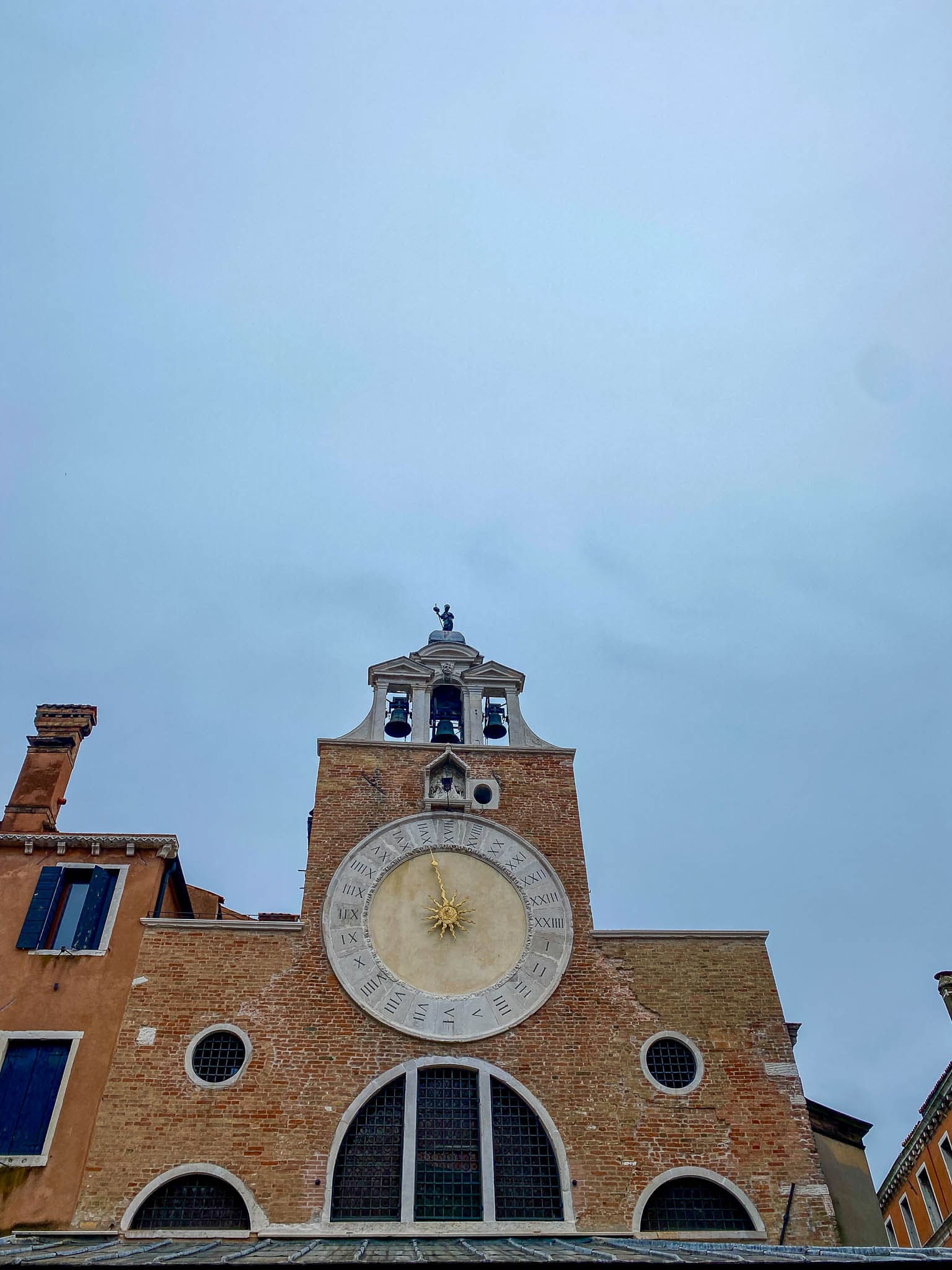
Ponte delle Tette
Walk: ~6 minutes
A quirky and lesser-known stop, the Bridge of Tits is located in the former red-light district of Venice. The name comes from the days when sex workers would display their breasts from the windows to attract clients — a curious (and government-regulated!) strategy in the 15th century.
Basilica dei Frari
Walk: ~8 minutes
This massive Gothic church, officially Santa Maria Gloriosa dei Frari, houses the tombs of Titian and Claudio Monteverdi.
Entrance: €5
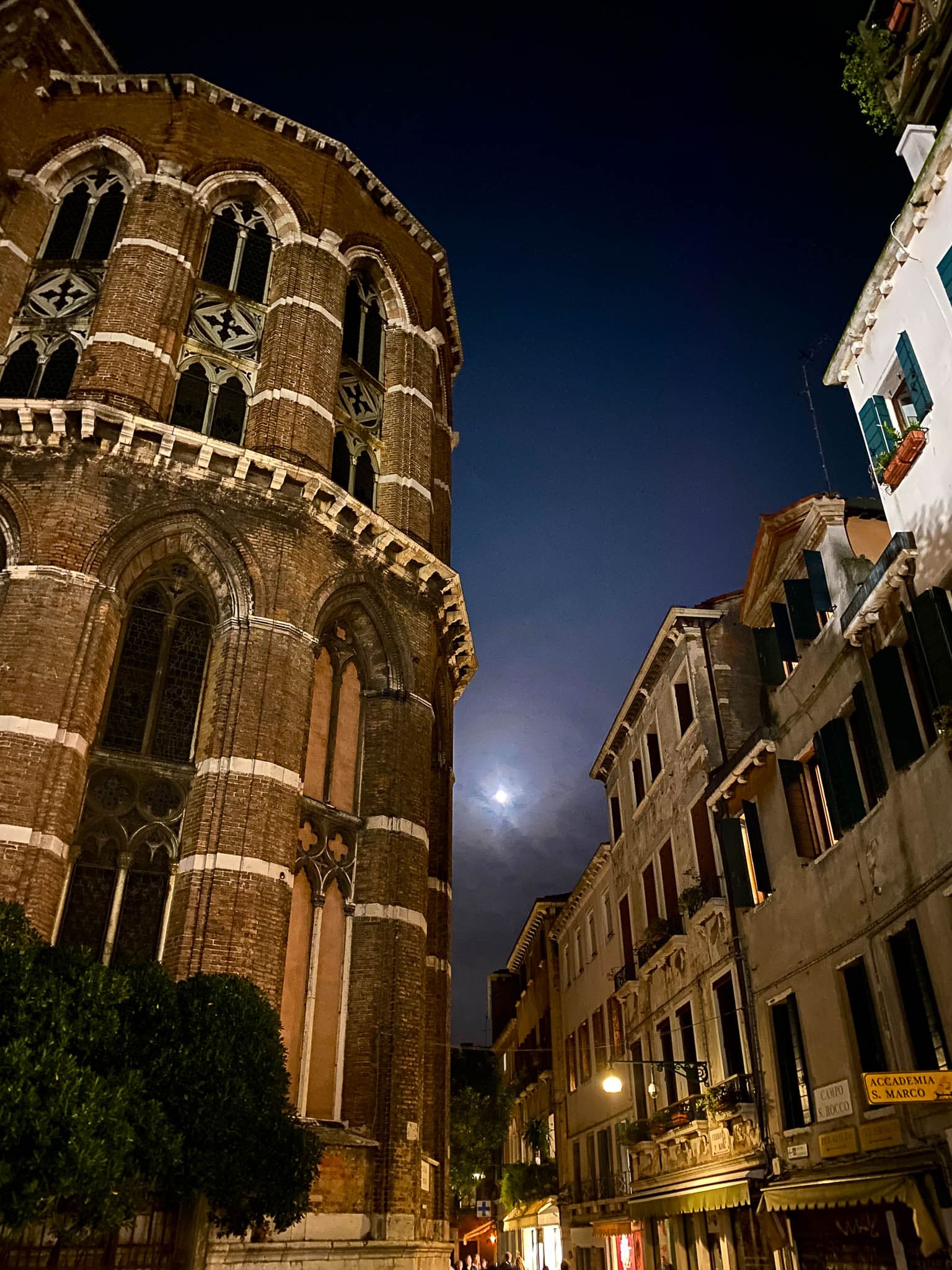
It also contains Titian’s masterpiece Assumption of the Virgin and a peaceful, spiritual atmosphere inside.
Right next to the Basilica there’s the church of San Roque and also Scuola Grande di San Rocco, both buildings incredible beautiful.
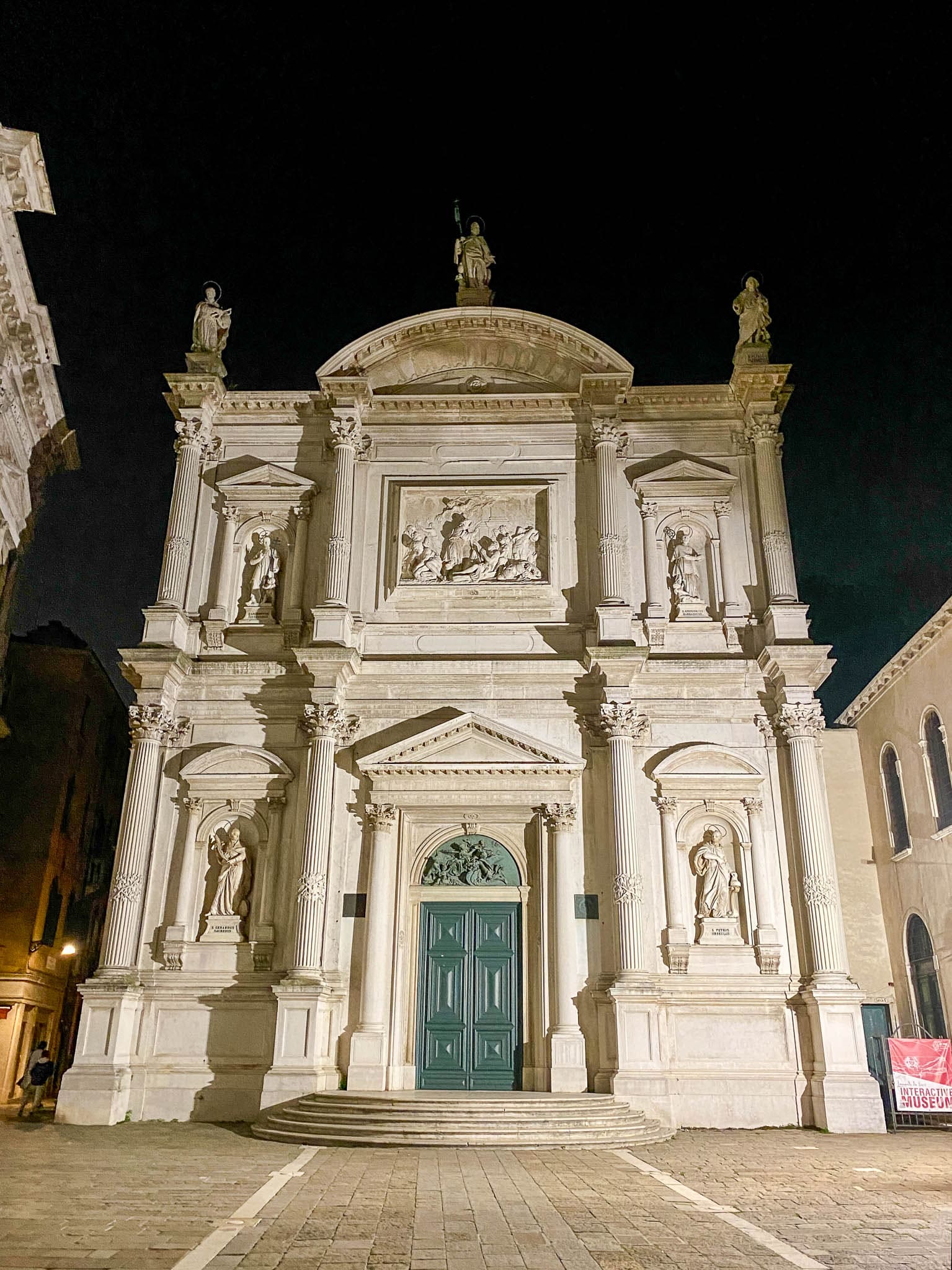
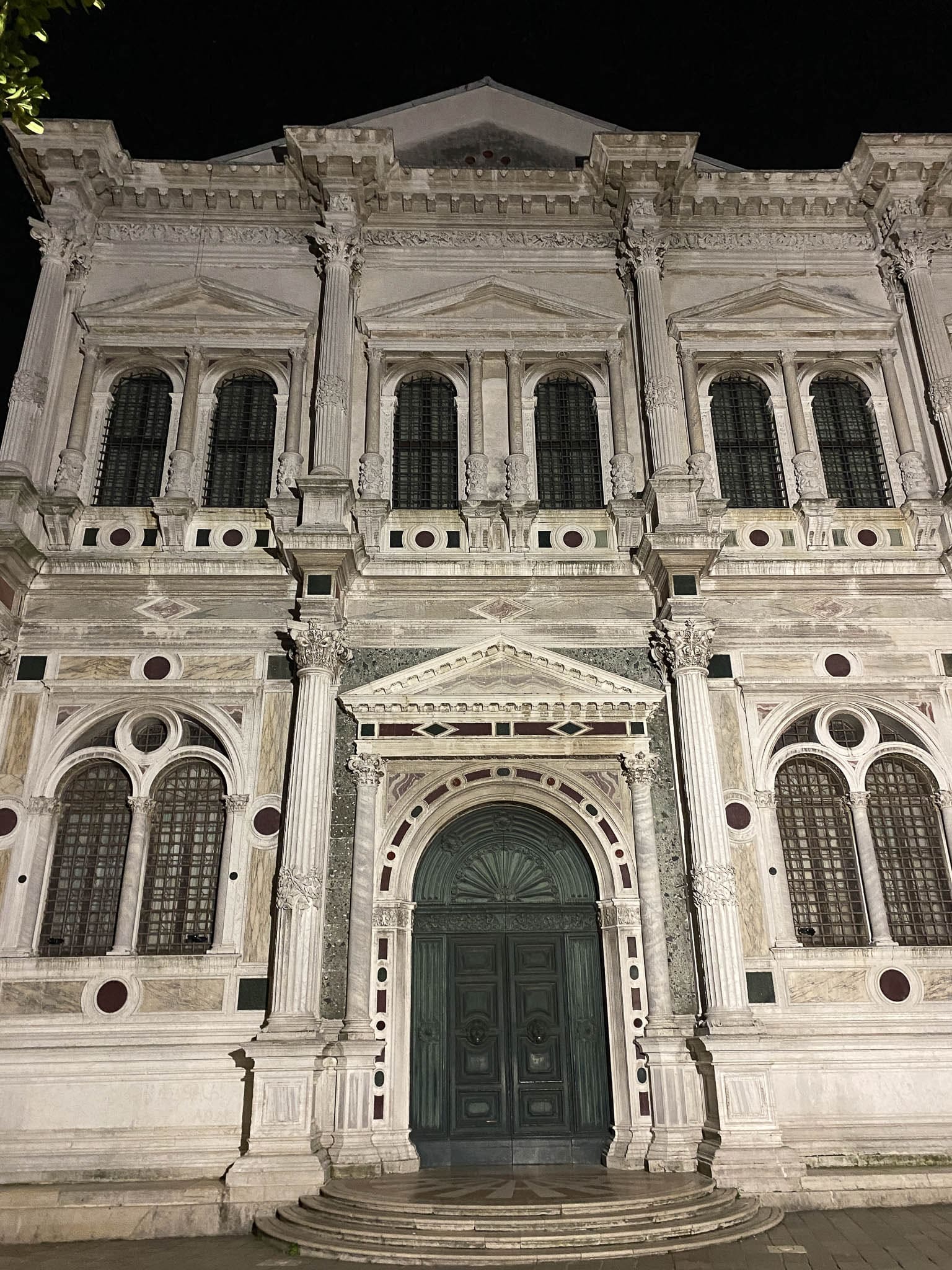
Scuola Grande San Giovanni Evangelista di Venezia
Walk: ~4 minutes
Scuola Grande di San Giovanni Evangelista is one of Venice’s oldest and most prestigious confraternities. Founded in the 13th century, it’s known for its stunning Renaissance architecture, rich interiors, and the historic relic of the True Cross that once inspired masterpieces by Bellini and Carpaccio.
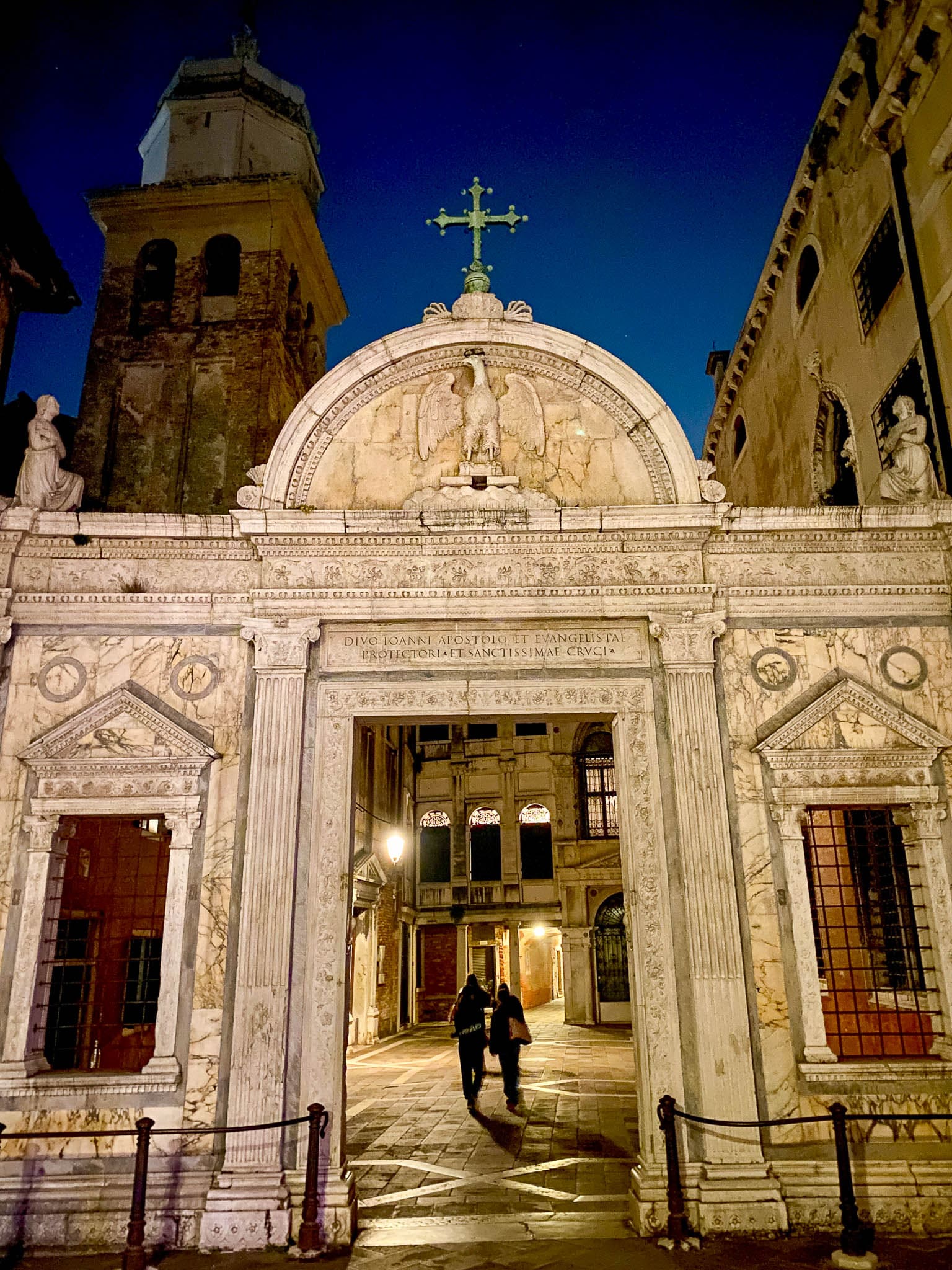
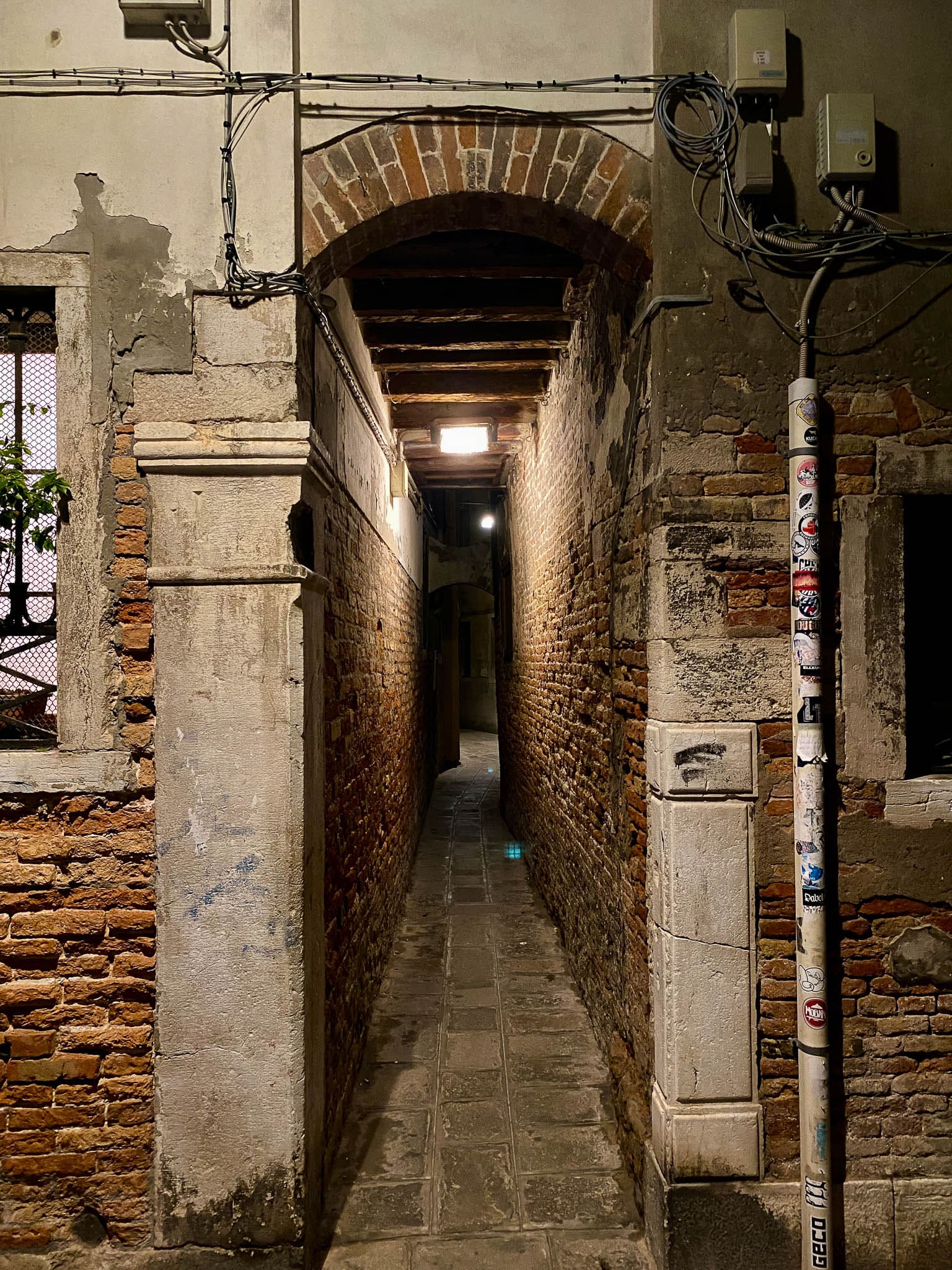
Chiesa di San Simeon Piccolo
Walk: ~6 minutes
With its green dome and classical facade, this 18th-century church stands out near the Grand Canal, right across from the train station. It’s one of the few churches in Venice where Mass is held in Latin.
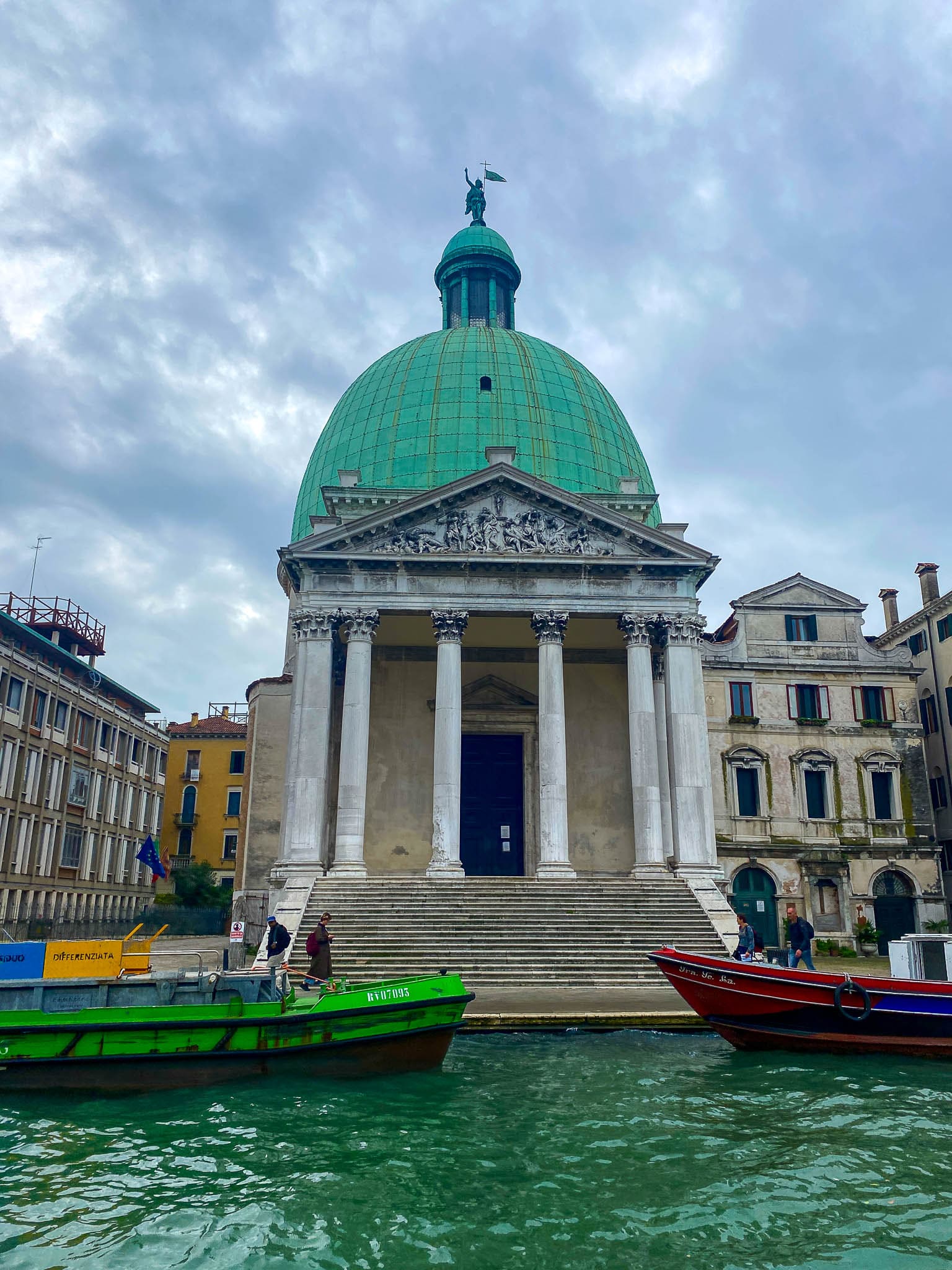
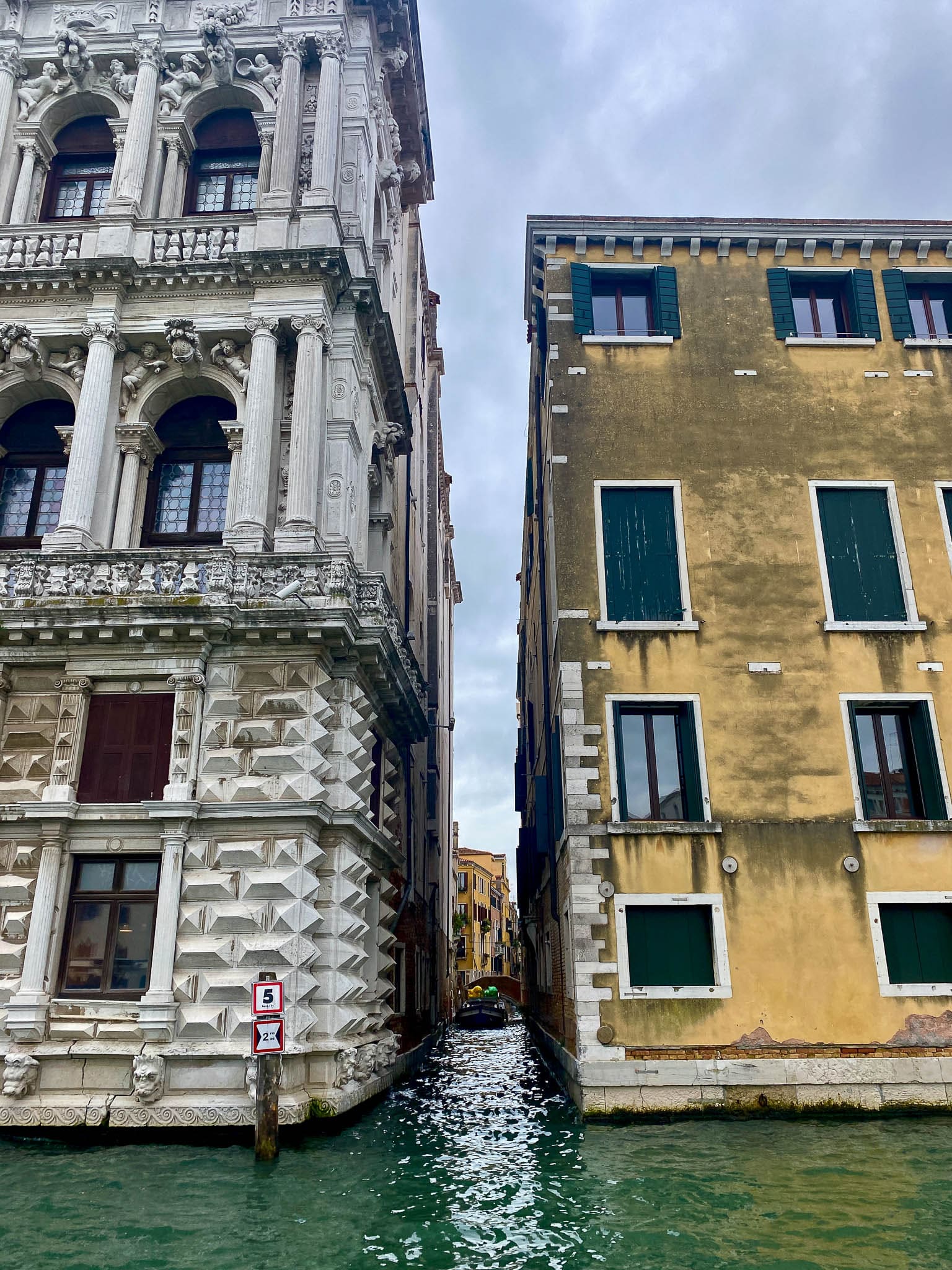
Ponte degli Scalzi (Bridge of the Barefoot)
1-minute walk
This white stone bridge is great for canal views and photos, especially at sunset. It’s also one of the main pedestrian entrances to Venice if you’re arriving by train.
On the other side of the bridge you can find the Chiesa Di Santa Maria di Nazareth. Another beautiful baroque church.
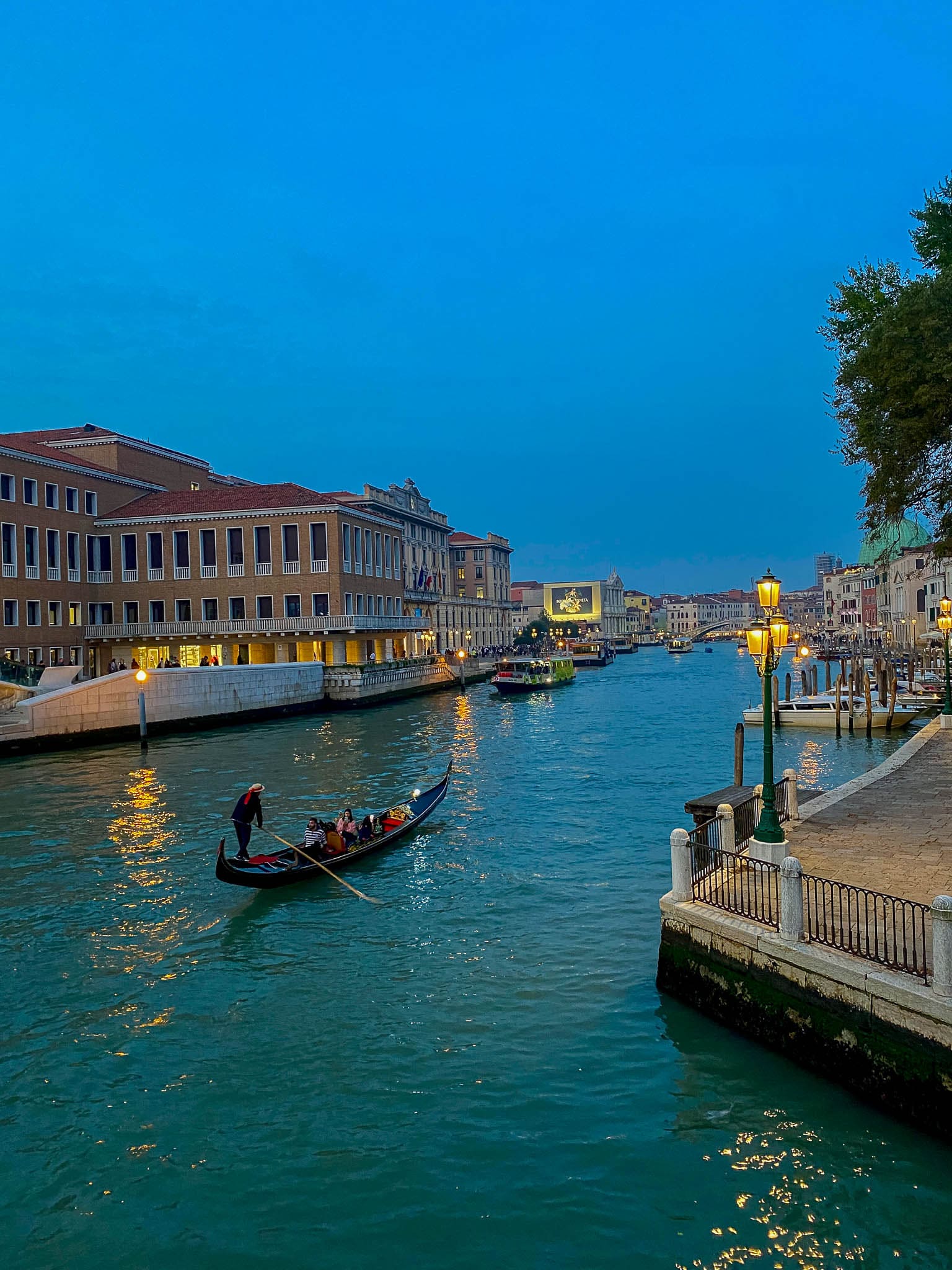
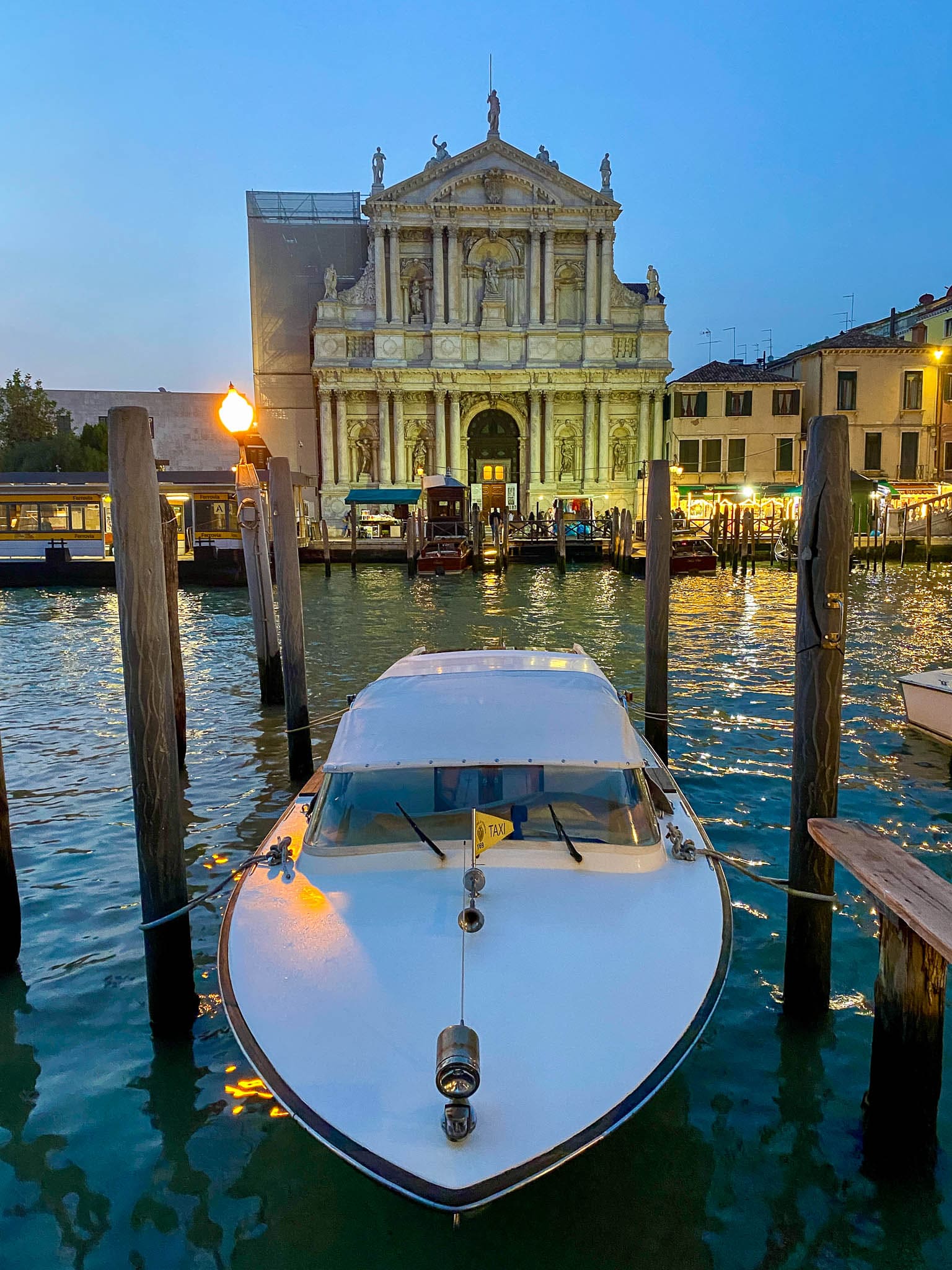
Tolentini & Aperitivo Time
Walk: ~6 minutes
Head towards the Campo dei Tolentini, a lively spot where students and locals gather in the evenings to drink, socialize and enjoy the aperitivo culture. You’ll find cheap bars, live music, and a youthful vibe.
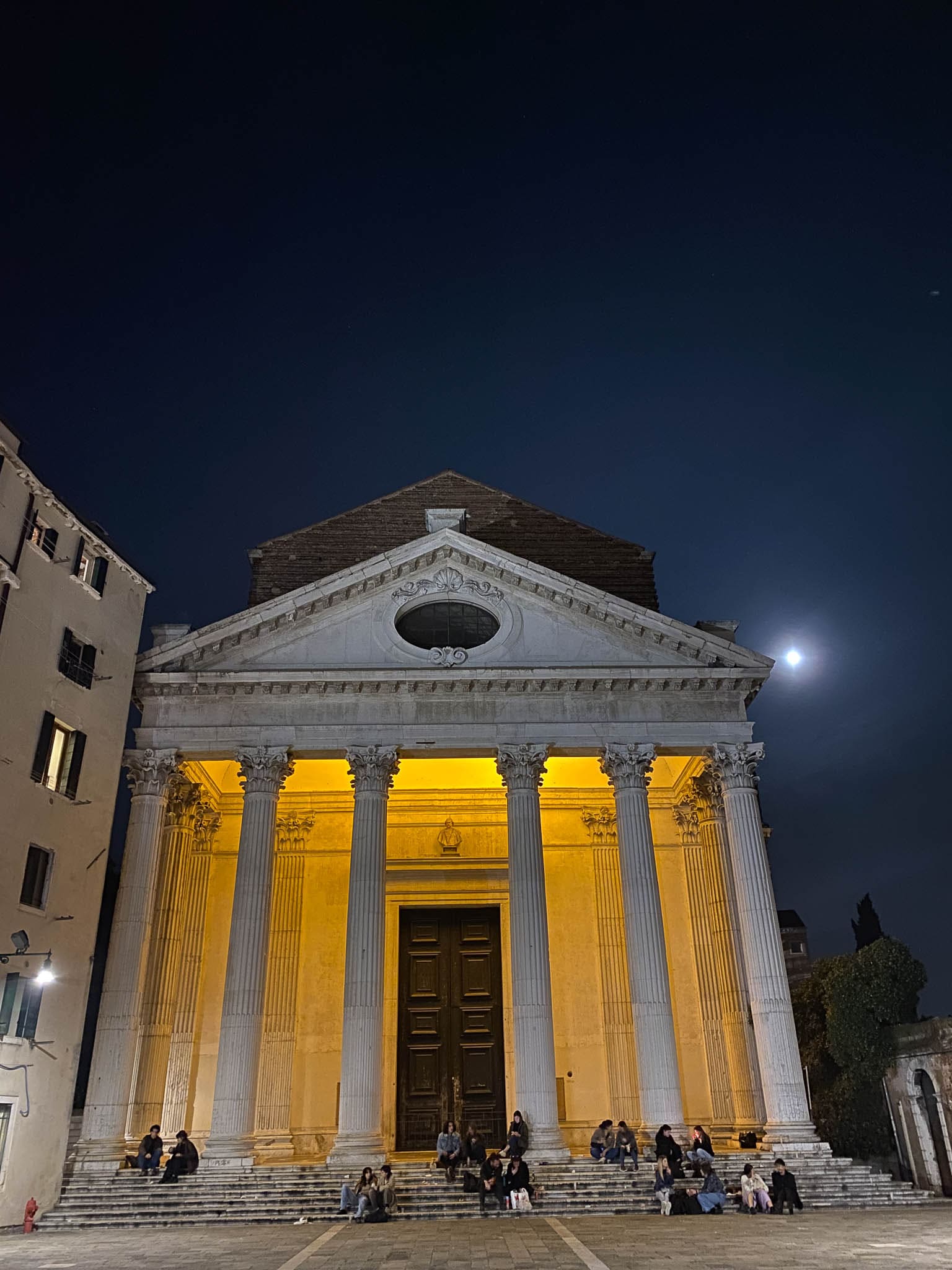
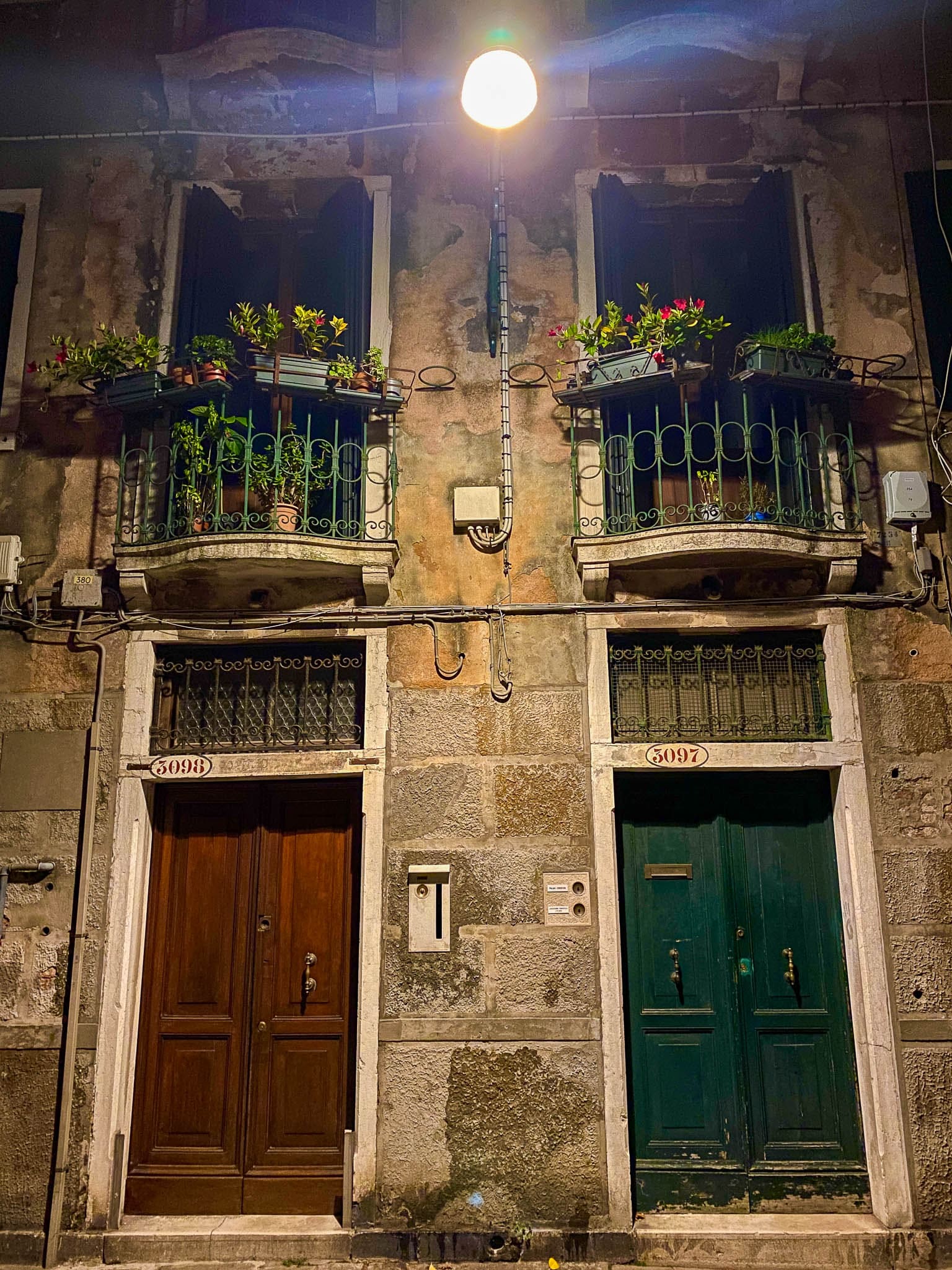
Wandering Alleys & Venetian Masks
Before the day ends, take some time to get lost in the alleys. You’ll come across tiny shops selling the famous Venetian masks, used during Carnival. Some are simple, others lavish and surreal — they reflect the city’s love for mystery and performance.
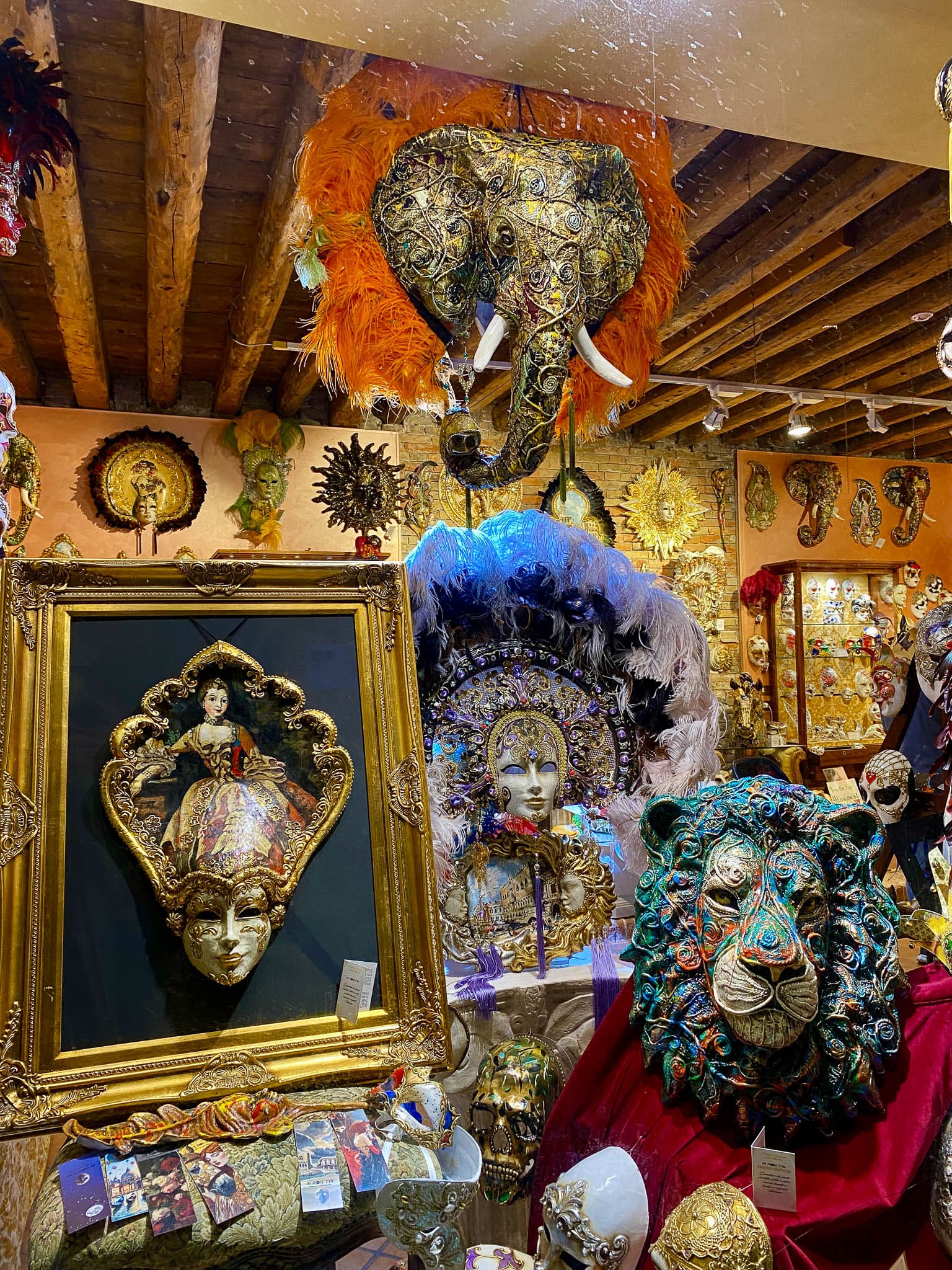
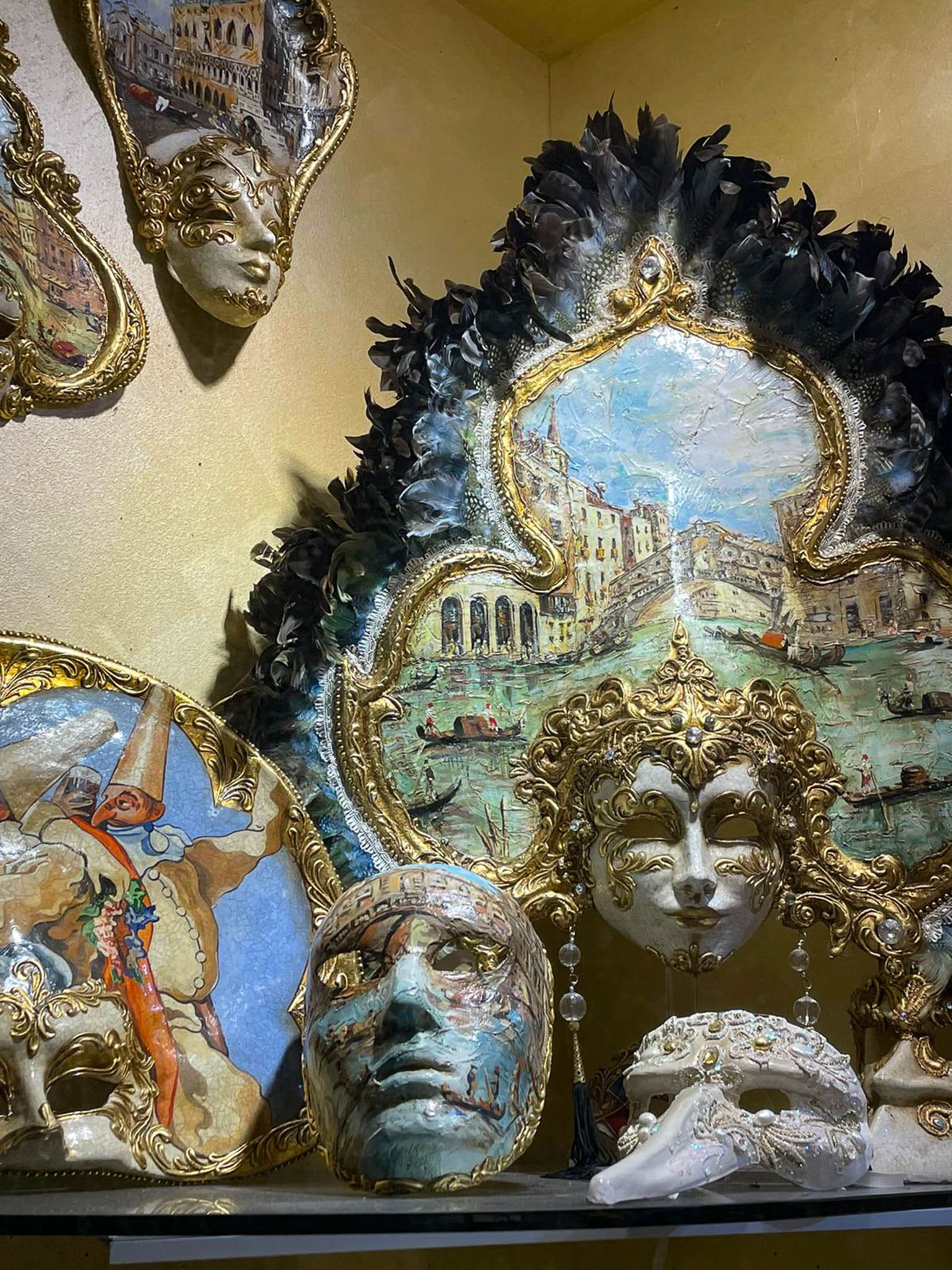
Ponte della Costituzione (Constitution Bridge)
Walk: ~10 minutes
End your day at this modern bridge, designed by Santiago Calatrava, offering amazing views of Venice’s maritime life — vaporettos, gondolas, water taxis and all the hustle of a city without roads.
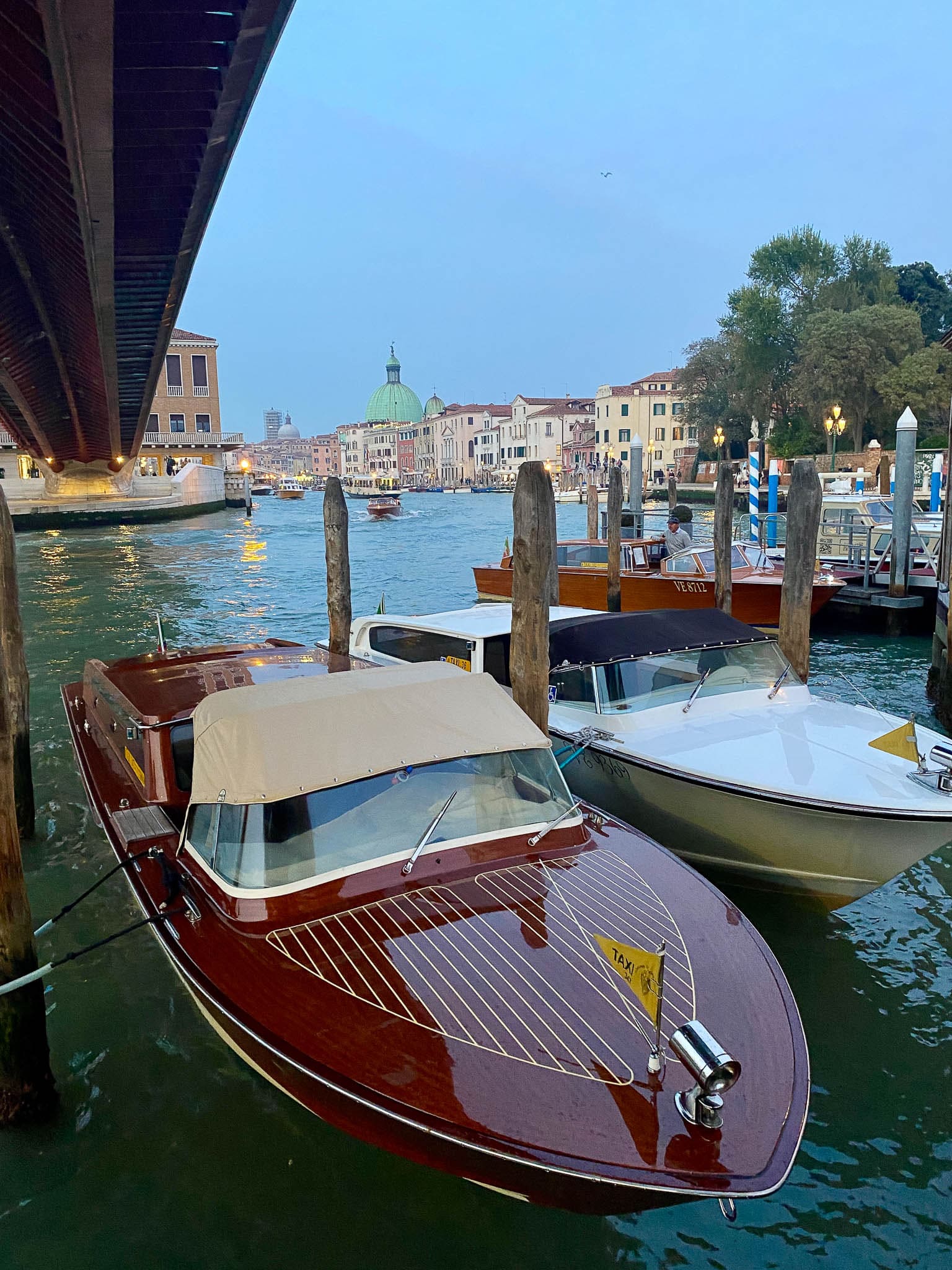
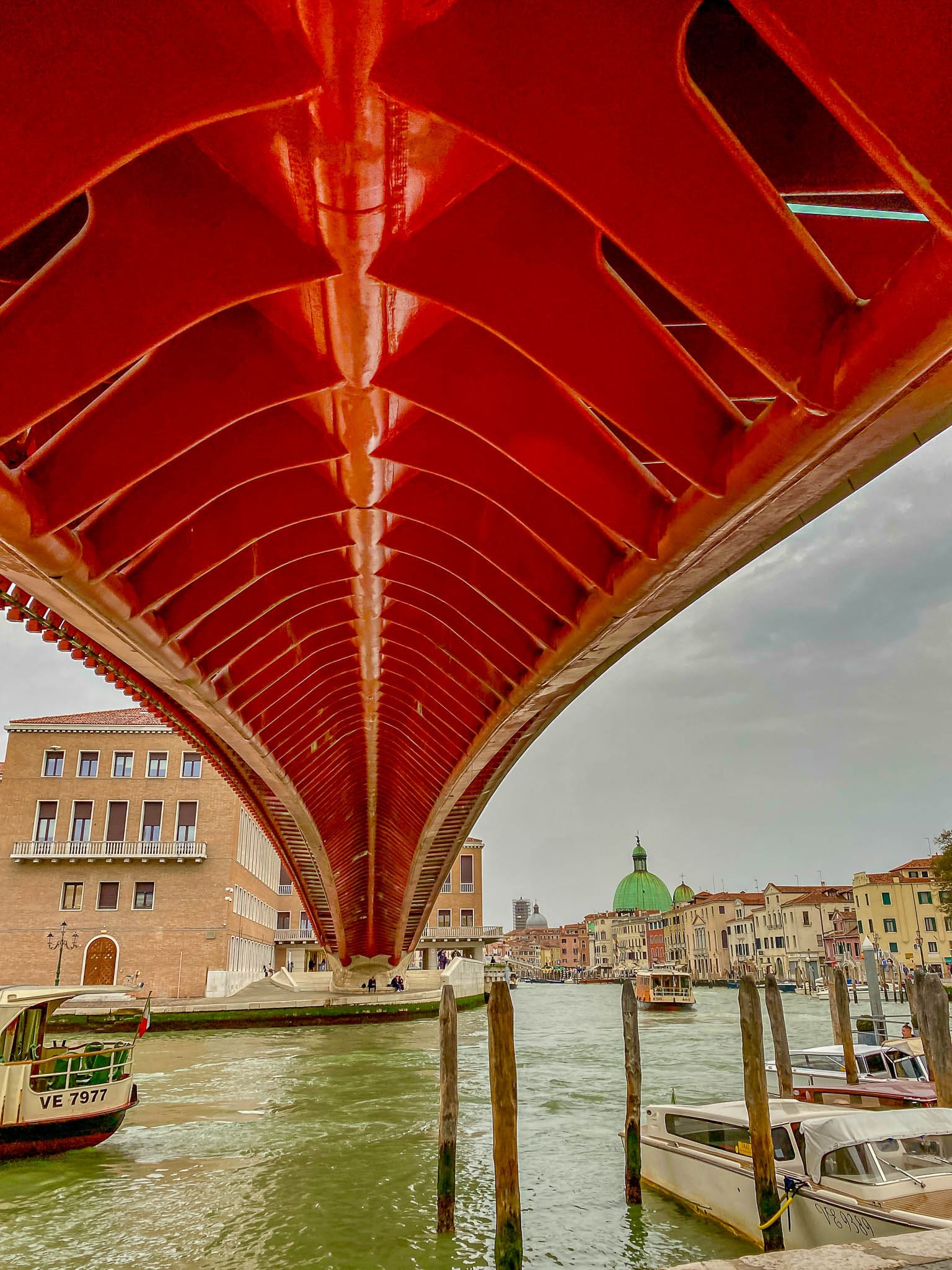
Day 2: A Colorful Escape to Burano
Chiesa Di Santa Maria Assunta Detta I Gesuiti
Chiesa di Santa Maria Assunta (I Gesuiti) is one of Venice’s hidden baroque gems. Tucked away in Cannaregio, this 18th-century church impresses with its dramatic marble interiors, grand altar, and artworks by Titian and Tintoretto. Its quiet charm and rich detail make it a perfect stop away from the crowds.
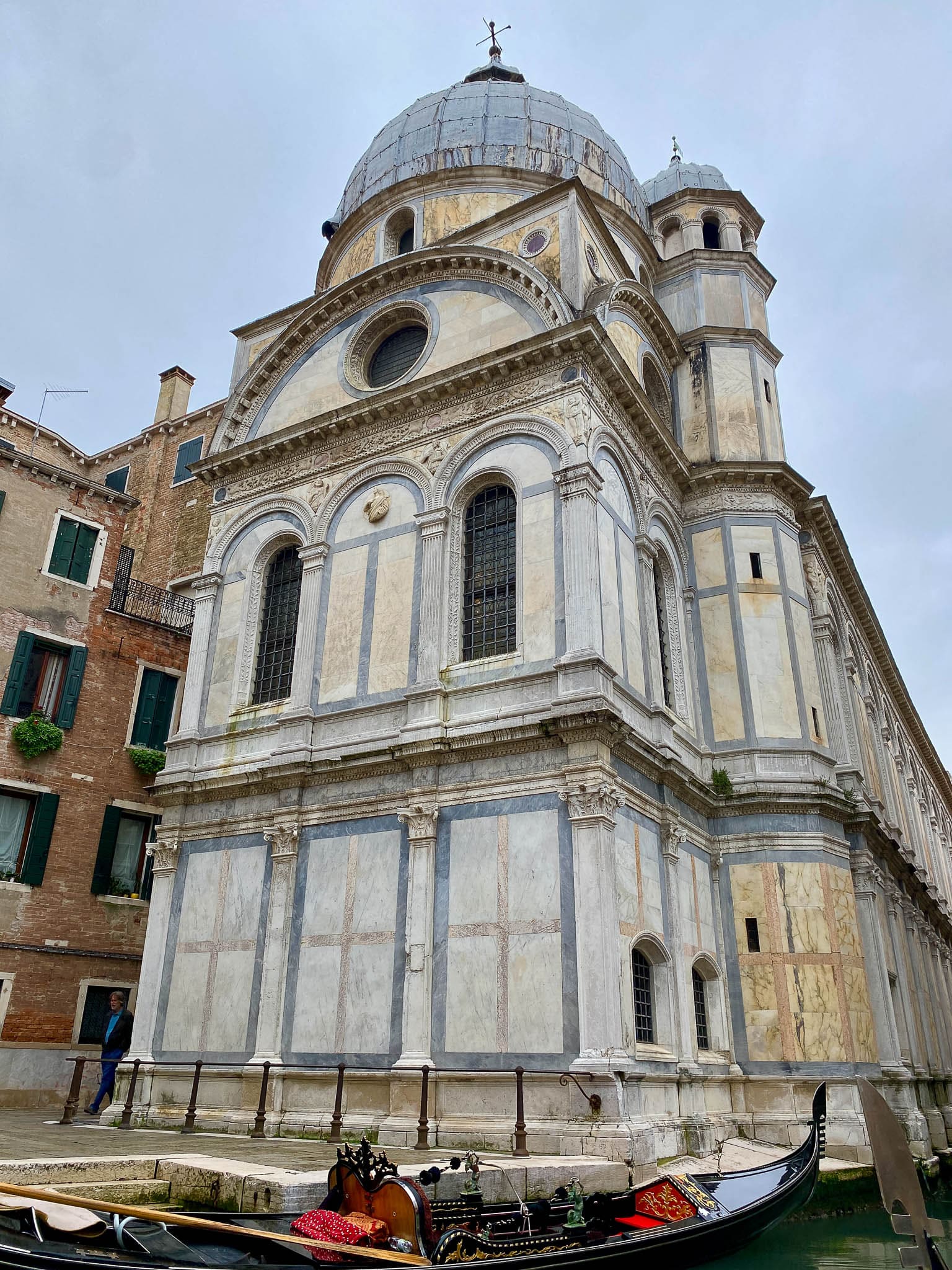
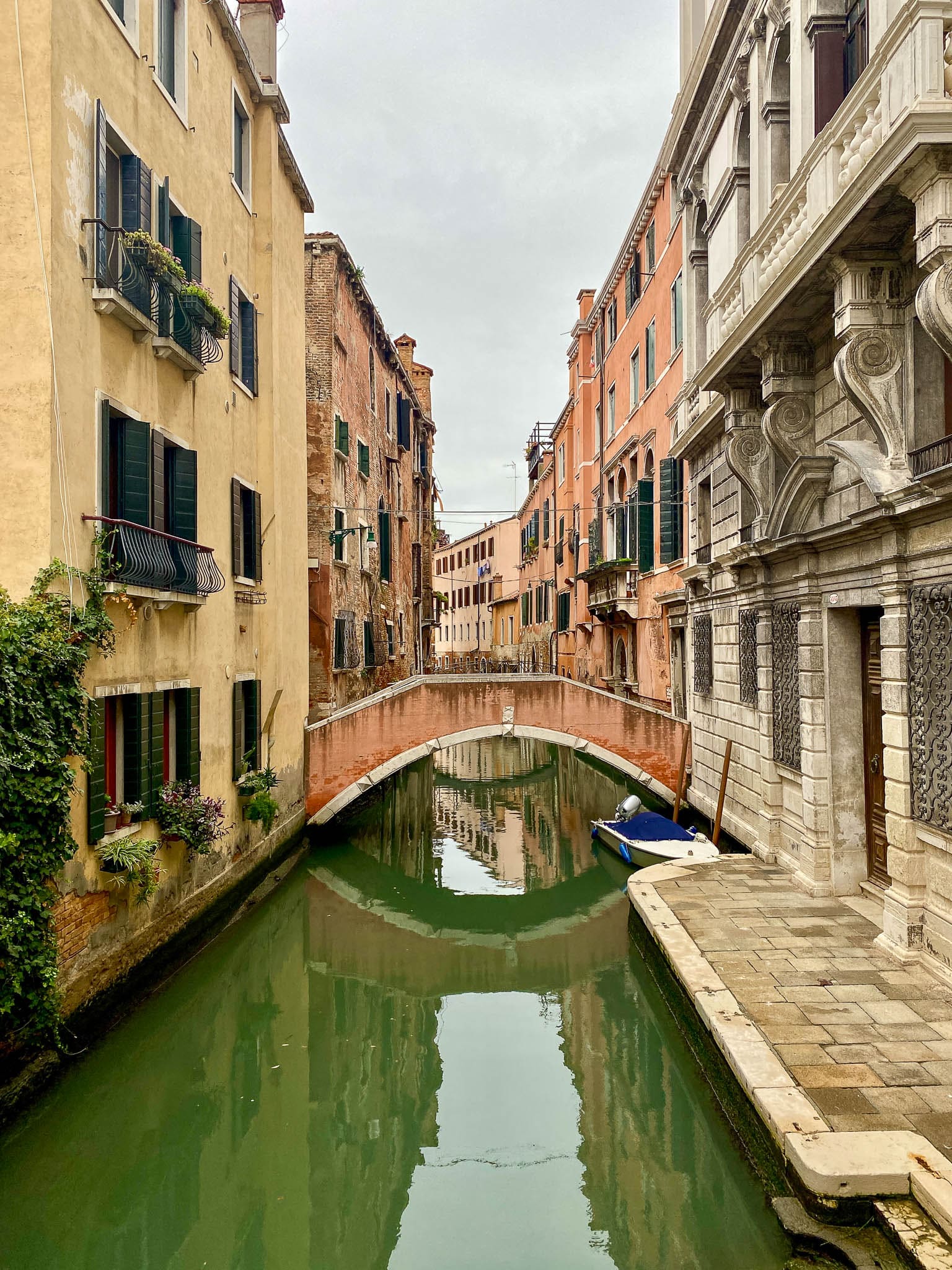
Getting to Burano by Vaporetto
Walk: ~1 minute
To reach Burano, head to Fondamente Nove (you can walk there from central Venice in about 20–25 minutes) and hop on vaporetto line 12.
Ticket price: around €9 each way, and the journey takes about 1 hour.
During the trip, you’ll pass two interesting sights:
San Michele Cemetery Island
On your left you’ll see Isola di San Michele, Venice’s cemetery island since the early 19th century. Napoleon decreed that burials should no longer take place in the city, so this tranquil island became the final resting place for Venetians. Among those buried here are Ezra Pound, Igor Stravinsky, and Joseph Brodsky.
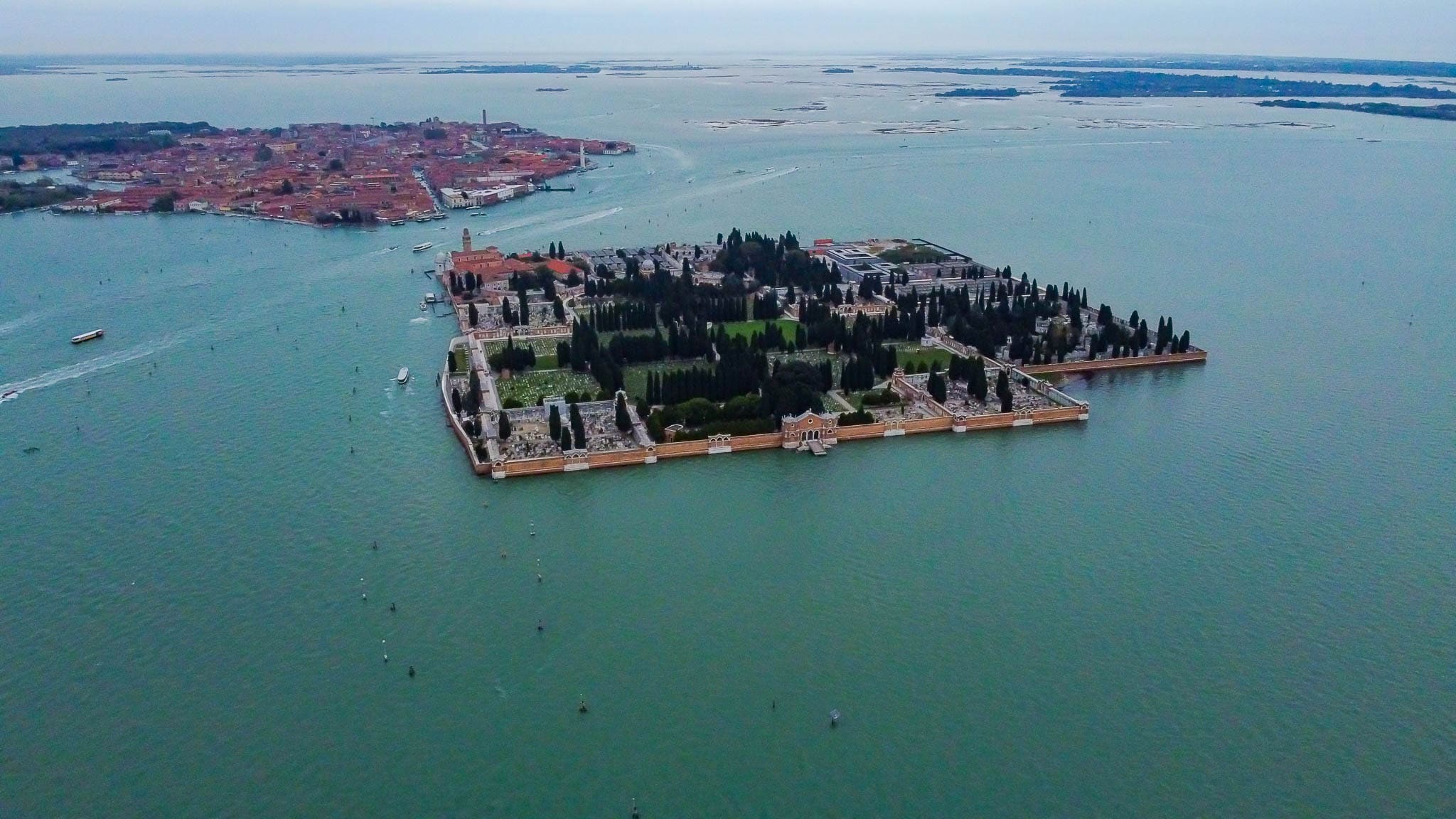
Murano – The Glass Island
Shortly after, the vaporetto stops at Murano, famous worldwide for its glassmaking tradition. Since the 13th century, Murano has been home to skilled artisans who create everything from delicate figurines to elaborate chandeliers. You can stop here on another day — but today, our focus is Burano.
Arrival in Burano – An Explosion of Colour
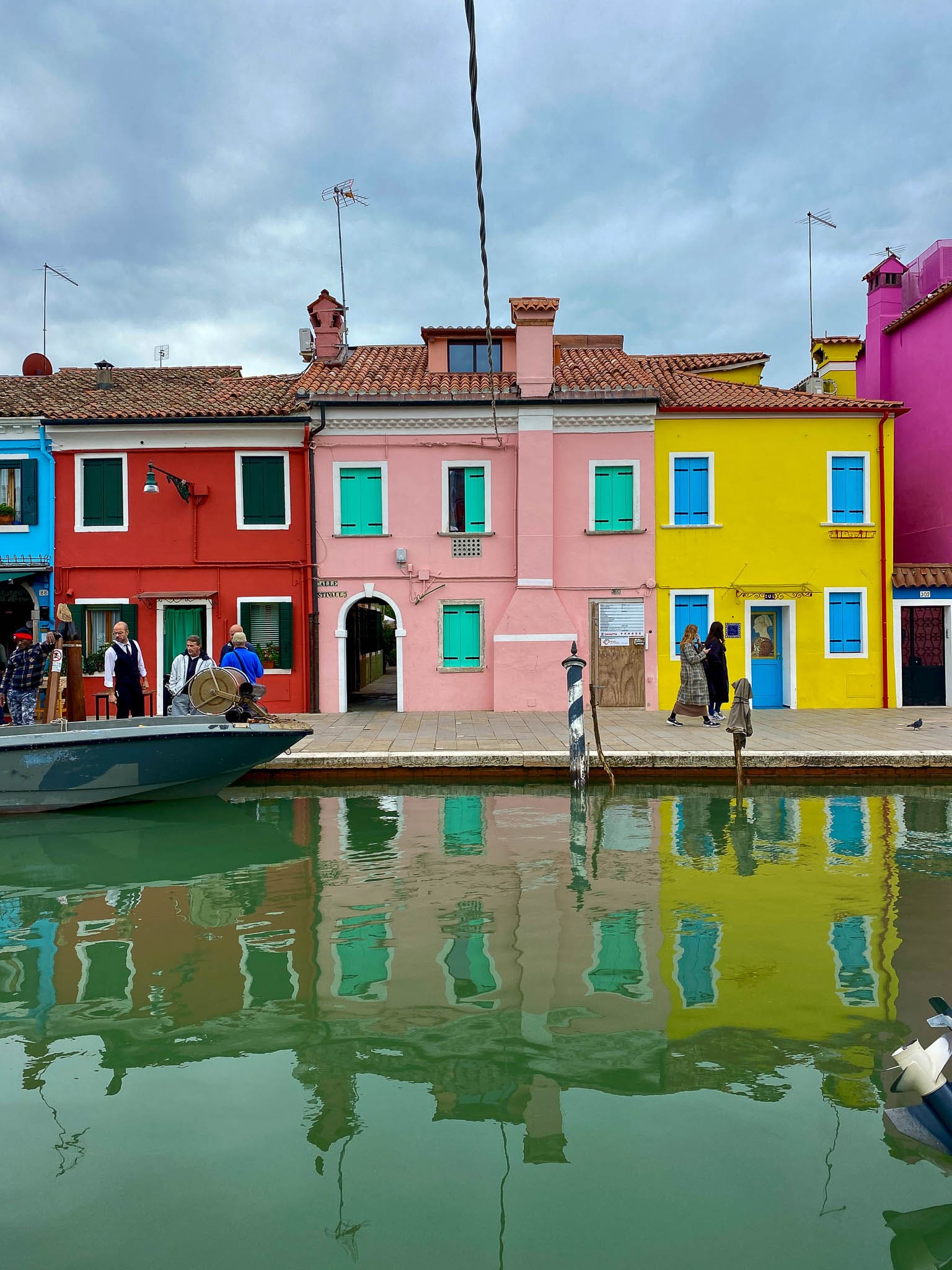
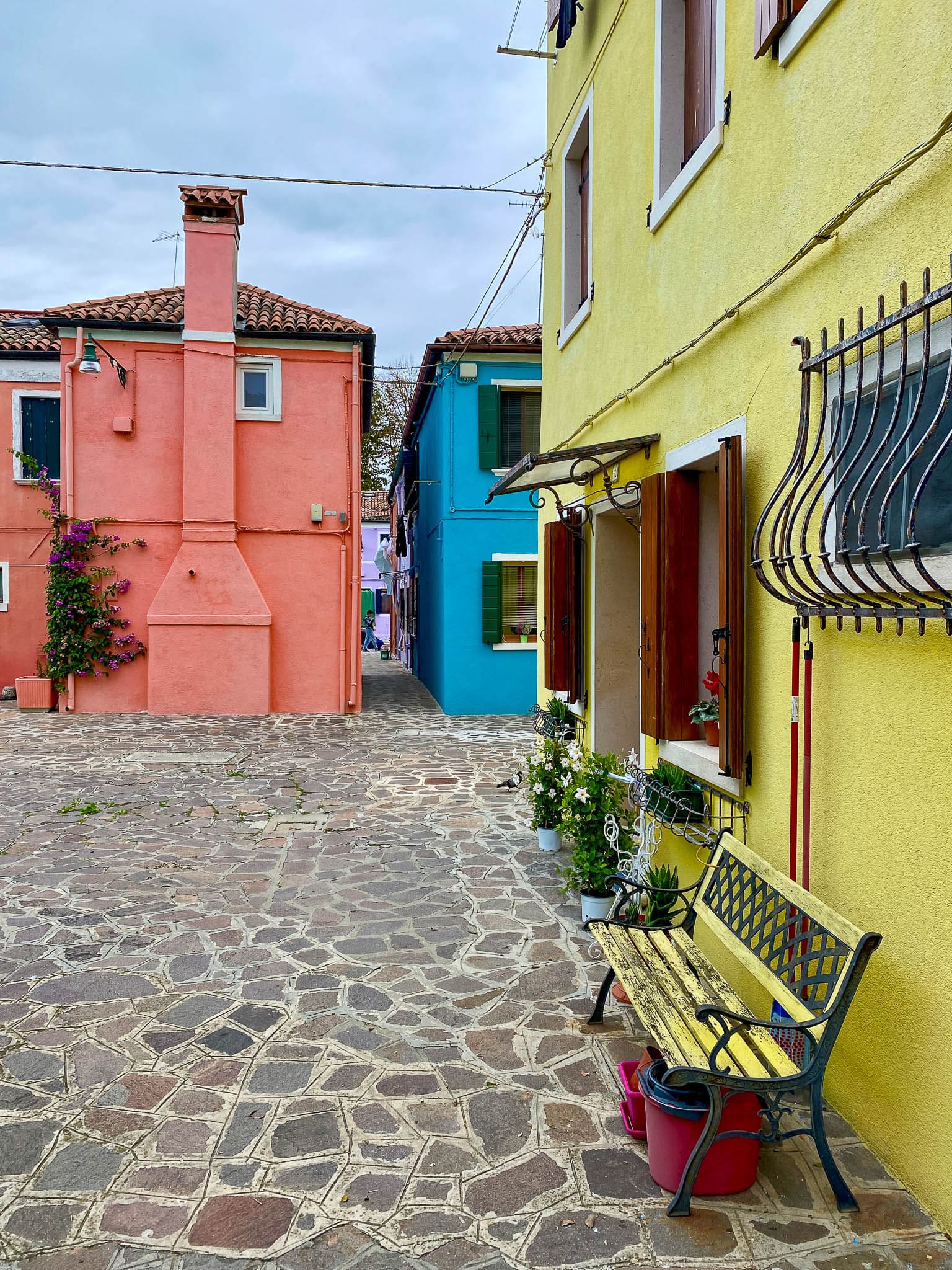
Stepping off the boat in Burano feels like stepping into a storybook. The first thing you’ll notice? Hundreds of brightly painted houses, each a different color.
According to tradition, the houses were painted in vivid hues so that fishermen could recognize their homes in the fog as they returned from sea. The custom continues today, and anyone wanting to repaint their home must submit a request to the local government, which assigns approved colors to maintain the island’s harmonious look.
The island is small — you can walk the entire area in about two hours, slowly, taking in the charm of every canal, bridge, and facade.
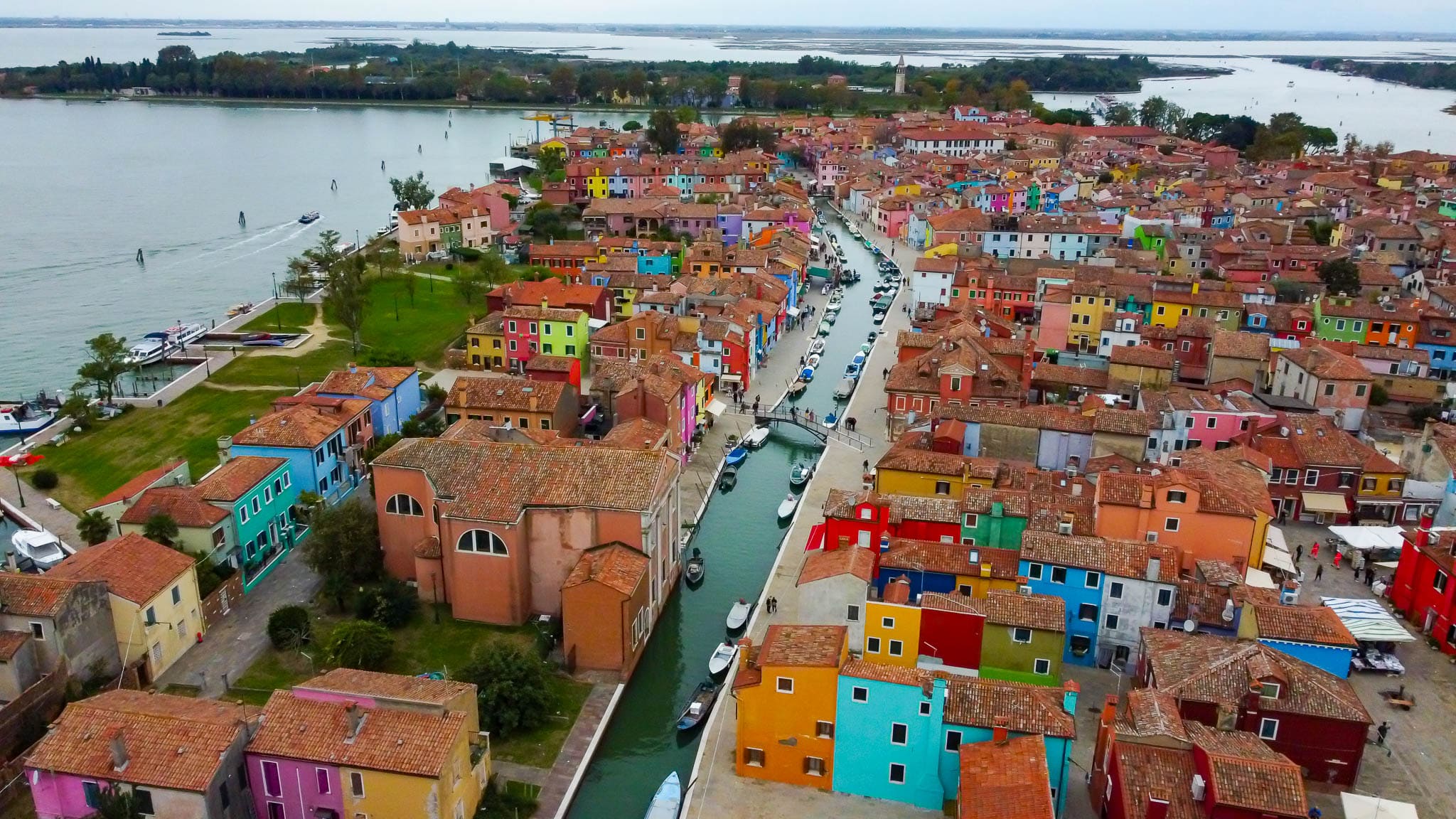
Chiesa di San Martino
Don’t miss the Church of San Martino, home to works of Venetian painter Gian Battista Tiepolo. What makes it truly unique is its leaning bell tower, visible from almost every corner of the island. The tilt is so pronounced it seems like the whole structure could topple sideways — a quirky, iconic sight of Burano.
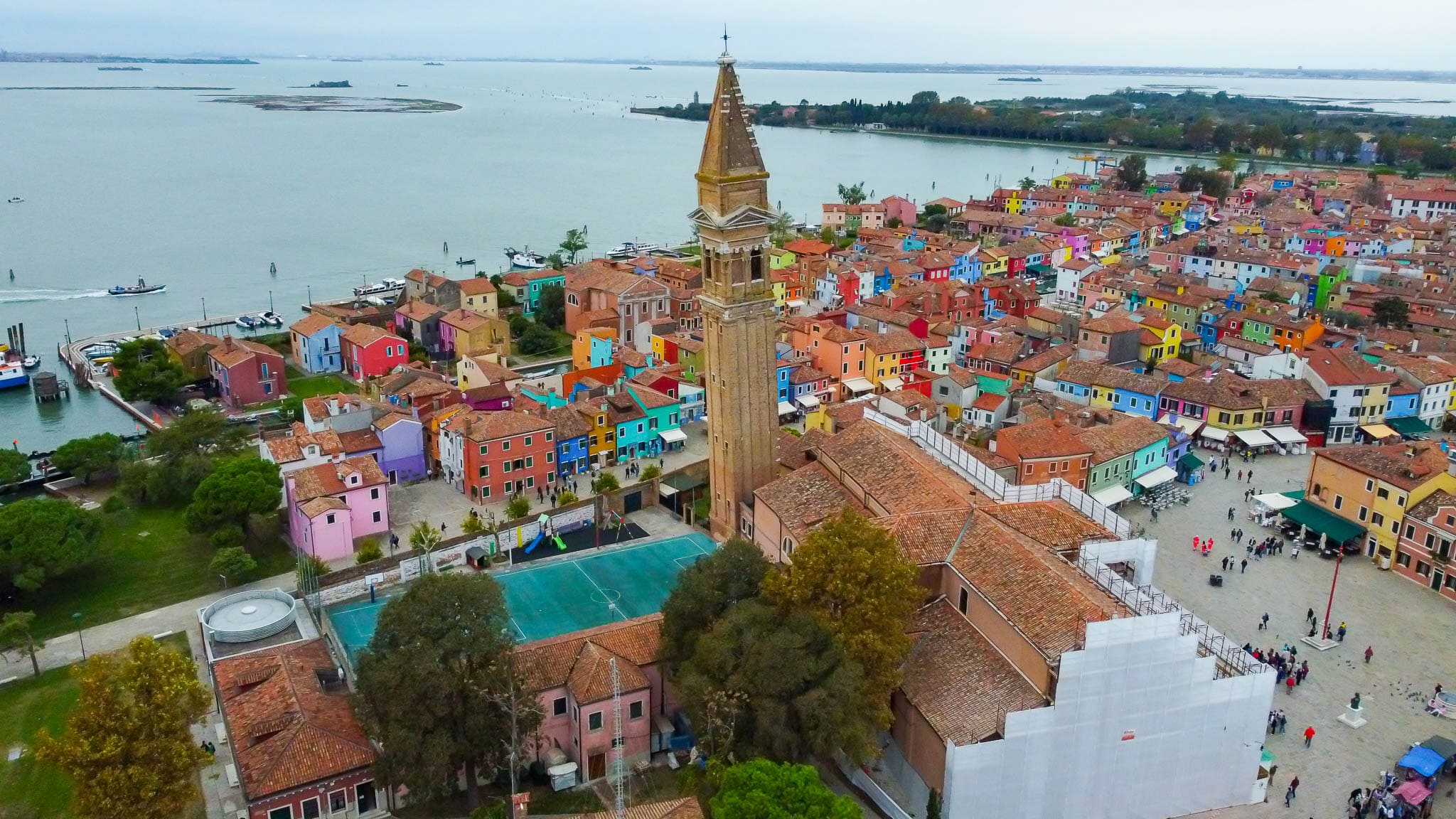
Where to Eat in Burano
Burano is packed with cozy restaurants and cafés, many of them serving fresh seafood straight from the lagoon. One of the most famous dishes is risotto di gò, made from a local fish found in the shallow waters around the island.
That said, prices can be a bit higher than in Venice proper — so take a look at the menu before sitting down, especially in tourist-heavy spots. You’ll also find small bakeries offering bussolà, a buttery biscuit typical of Burano.
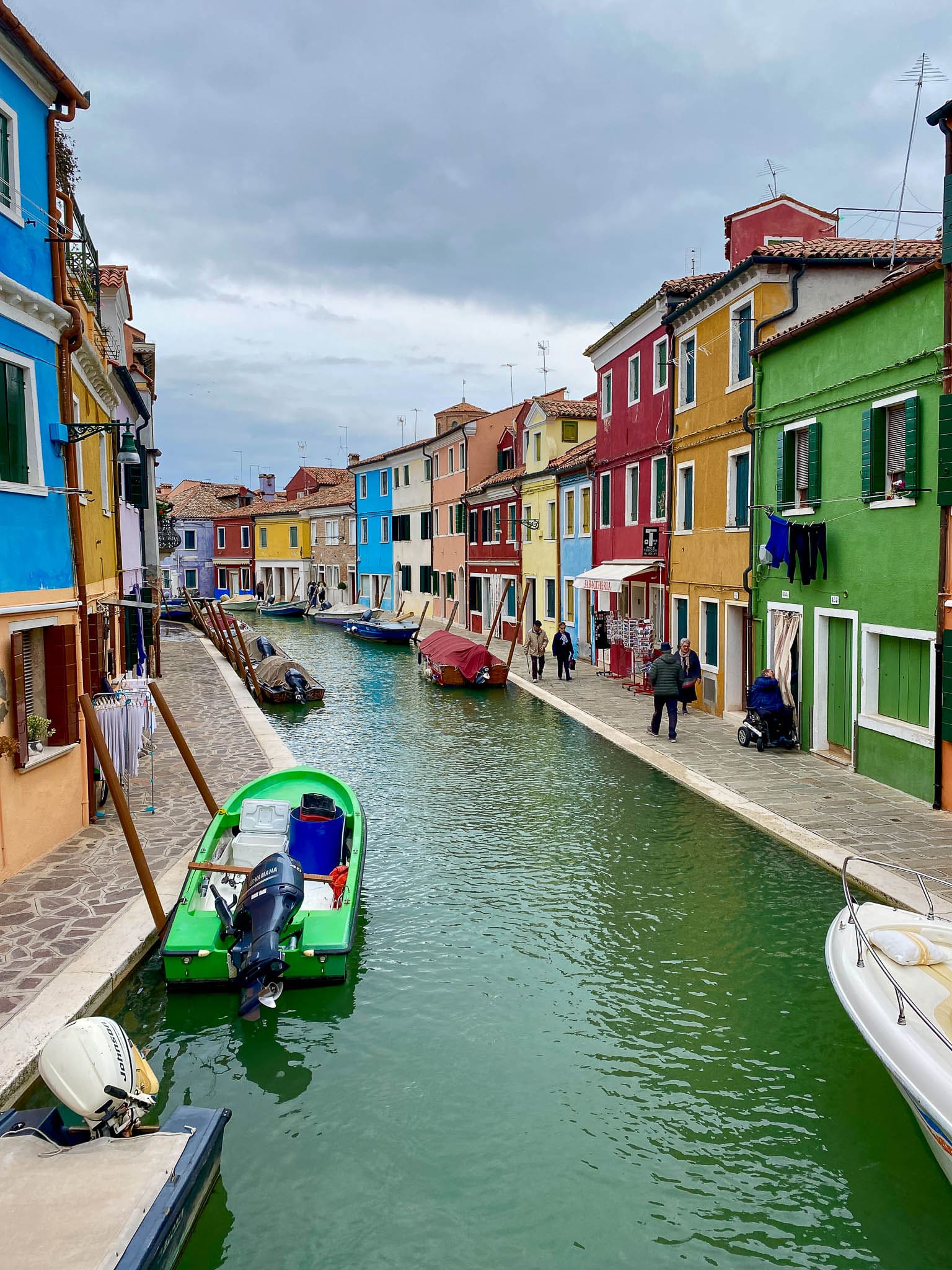
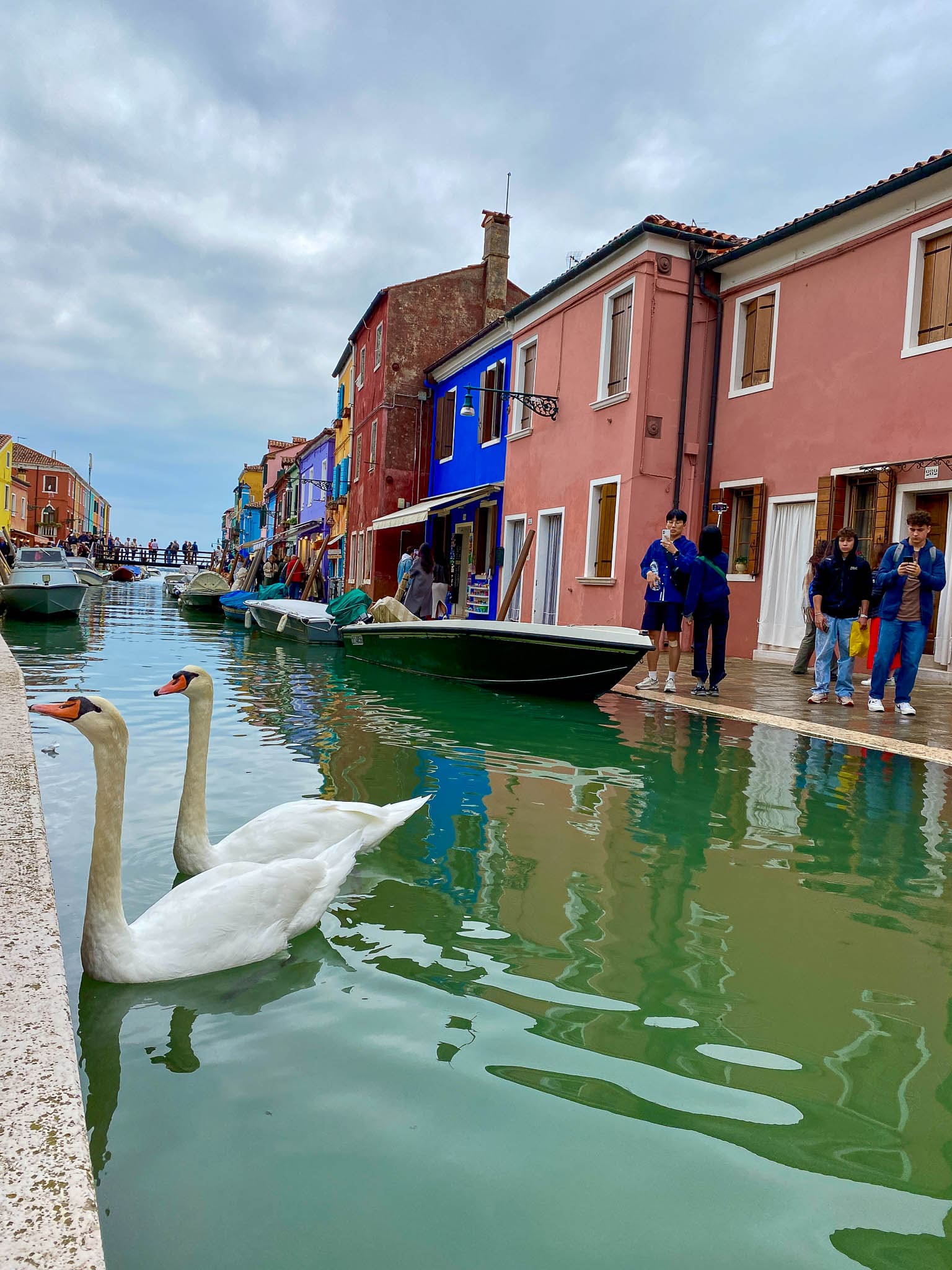
A Photographer’s Dream
Whether you’re into photography or just want to soak in the atmosphere, Burano is a visual wonderland. Every corner is a composition of canal reflections, laundry dancing in the breeze, and paint that’s been touched up with love for generations. Take your time. There’s no rush here.
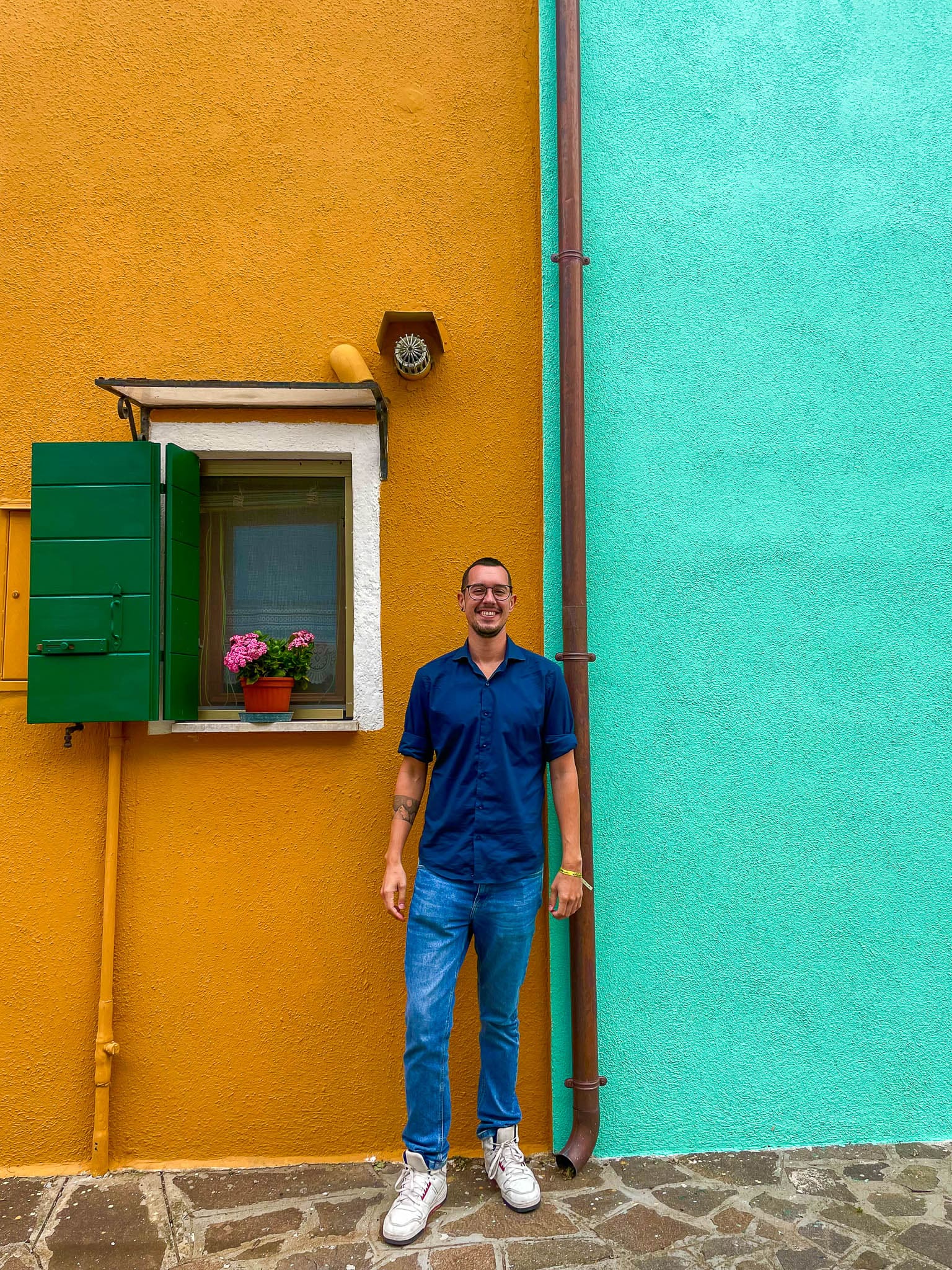
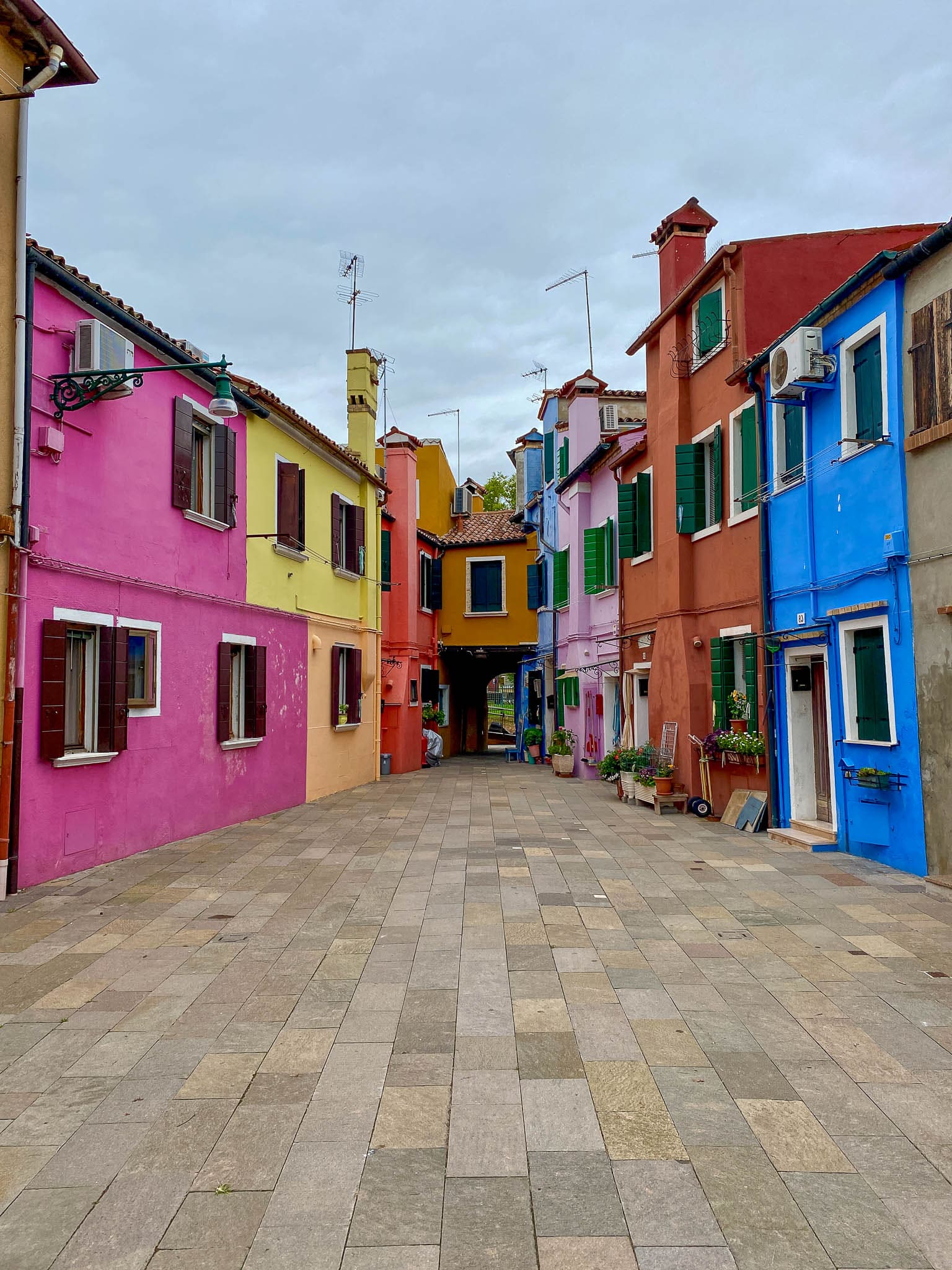
Final Thoughts: Venice, A Living Fairytale
Venice and Burano together offer a journey through time and imagination. Whether you’re walking over centuries-old bridges or standing quietly on a dock watching the sunset over the lagoon, Venice feels like a city written in dreams — too surreal, too beautiful, too impossible to exist… and yet, there it is.
This is not just a city of canals and gondolas — it’s a place of poetry, history, and contrasts. A city where time slows down, and beauty is found in both the grandeur of a palace and the faded paint of an old wooden door. Just when you think you’ve seen it all, Burano reminds you that color, charm, and life thrive in the most unexpected corners of the world.
And if you’re traveling through Italy, don’t miss my other detailed itineraries to help you plan unforgettable adventures:
- Rome – the Eternal City, full of history and wonder
- Naples – a chaotic, delicious deep dive into southern Italian life
- Amalfi Coast – breathtaking landscapes and postcard-perfect towns
- Florence – cradle of the Renaissance, art, and Tuscan charm
Make sure to check them out for more tips, history, hidden corners, and the best experiences each destination has to offer.

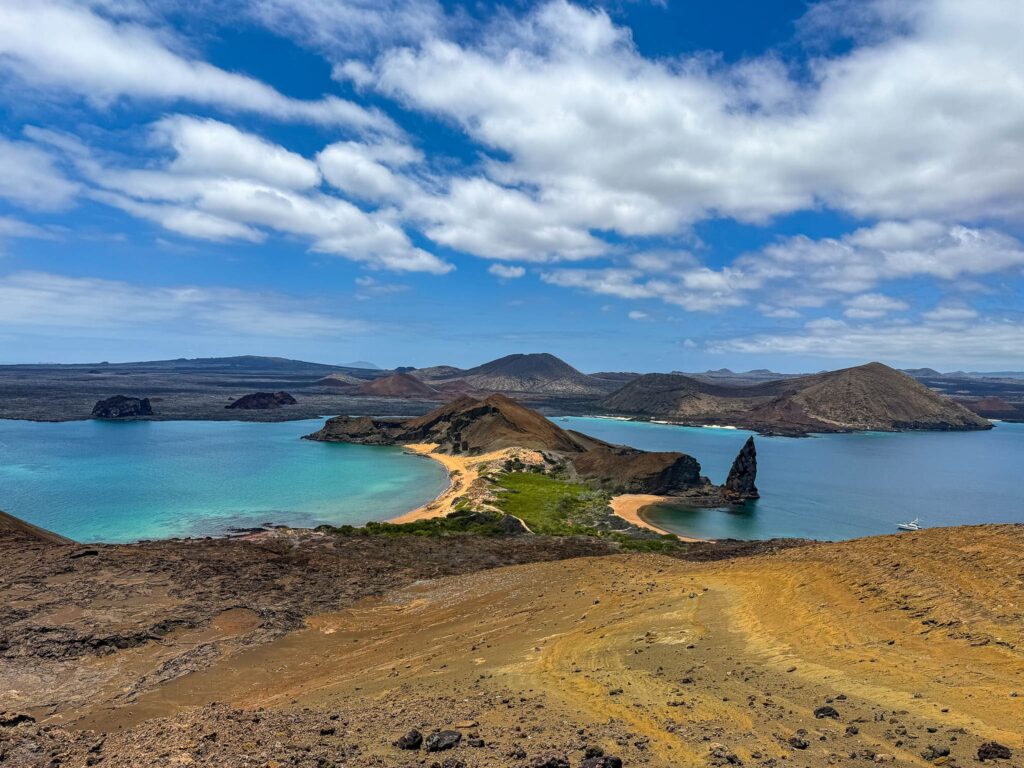
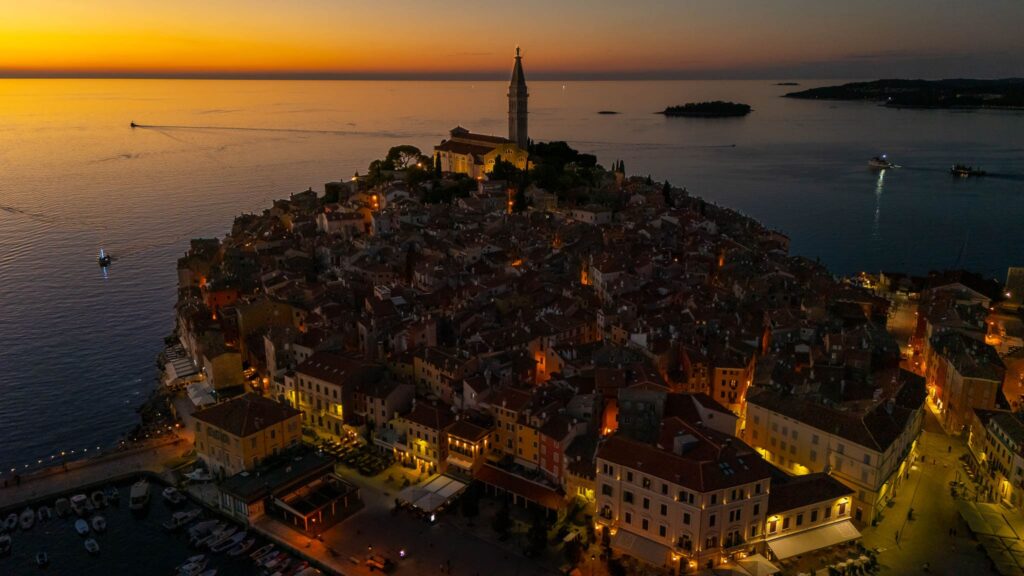
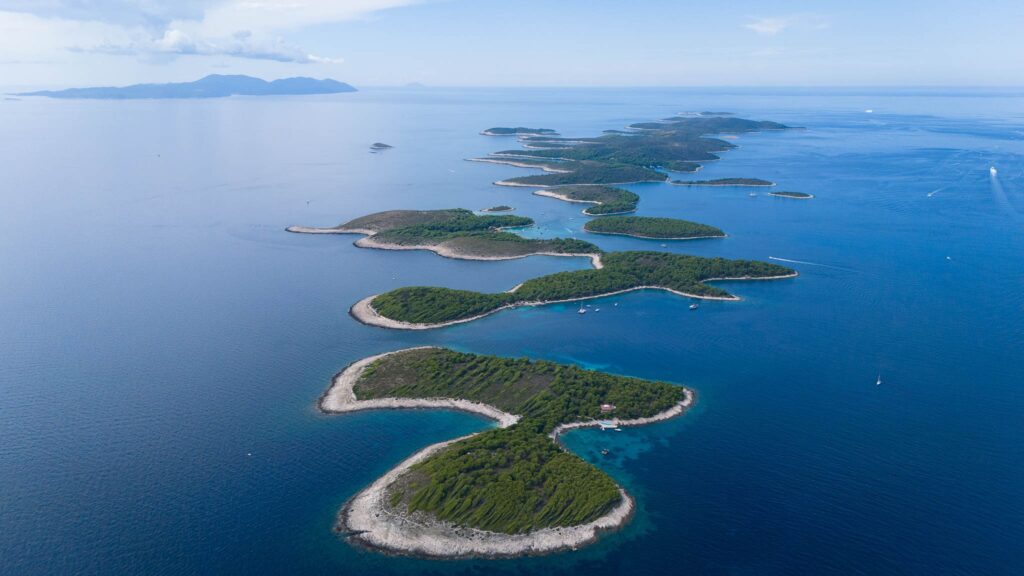



Great itinerary! Many thanks
I’m glad it help you out Mark! have a lovely time in Venice